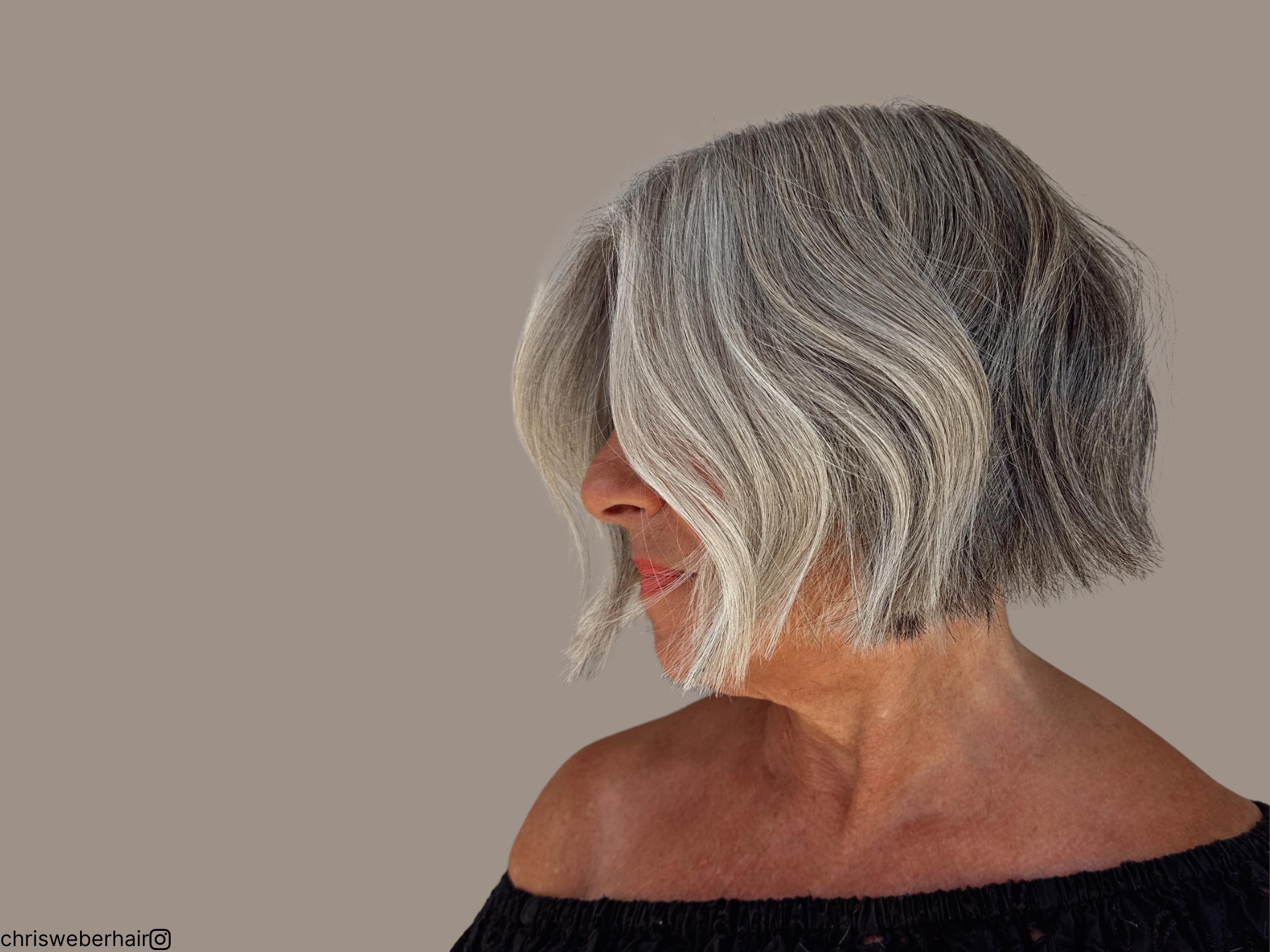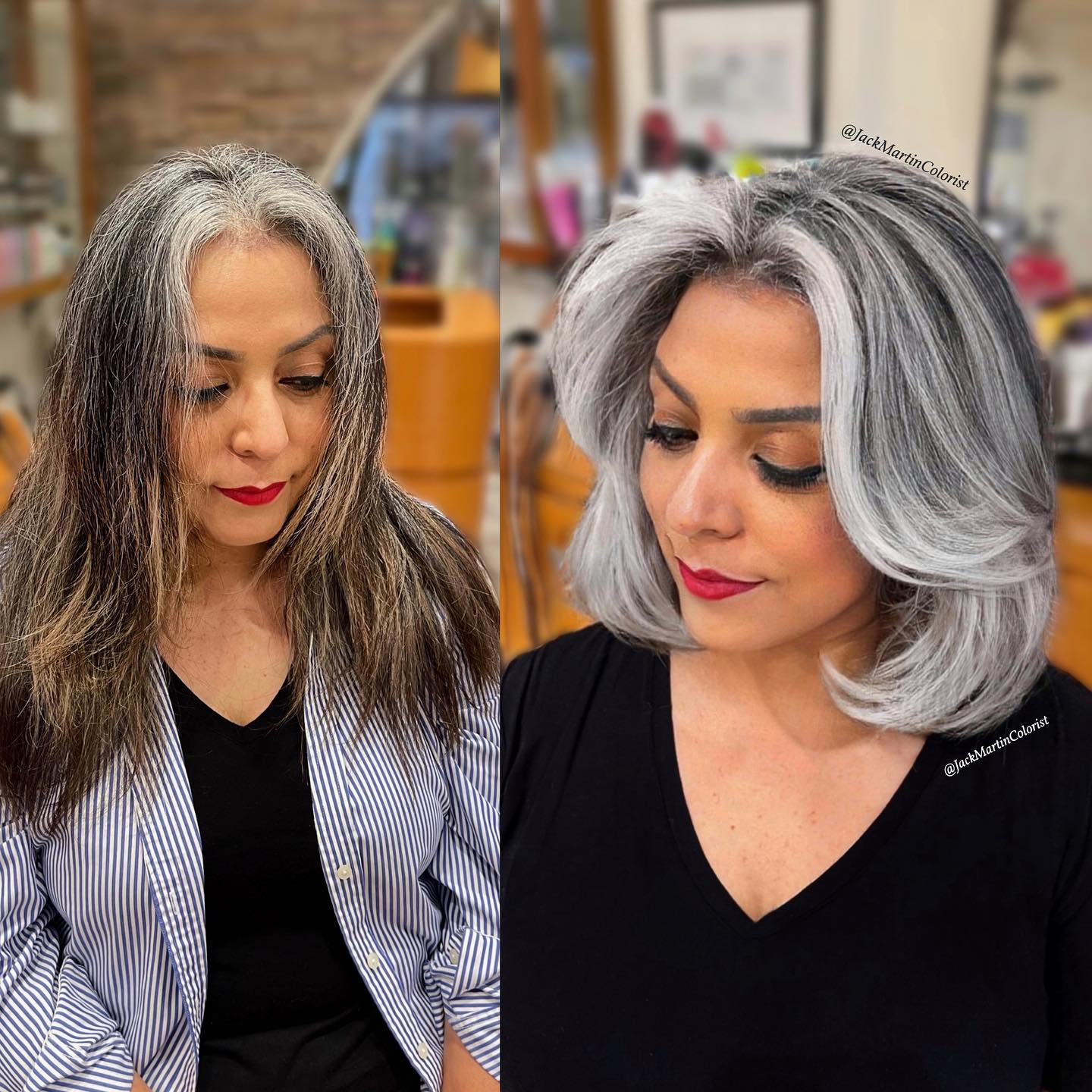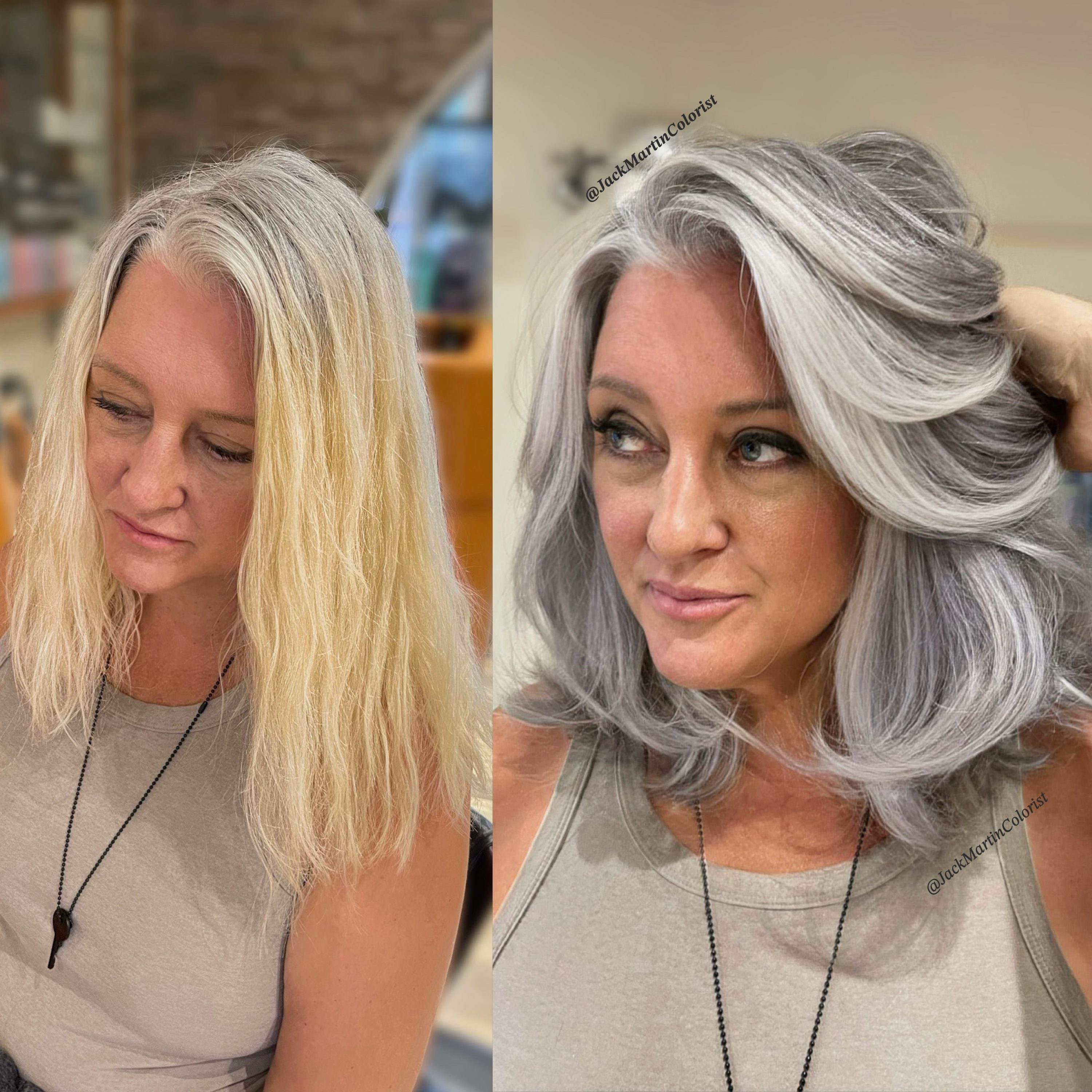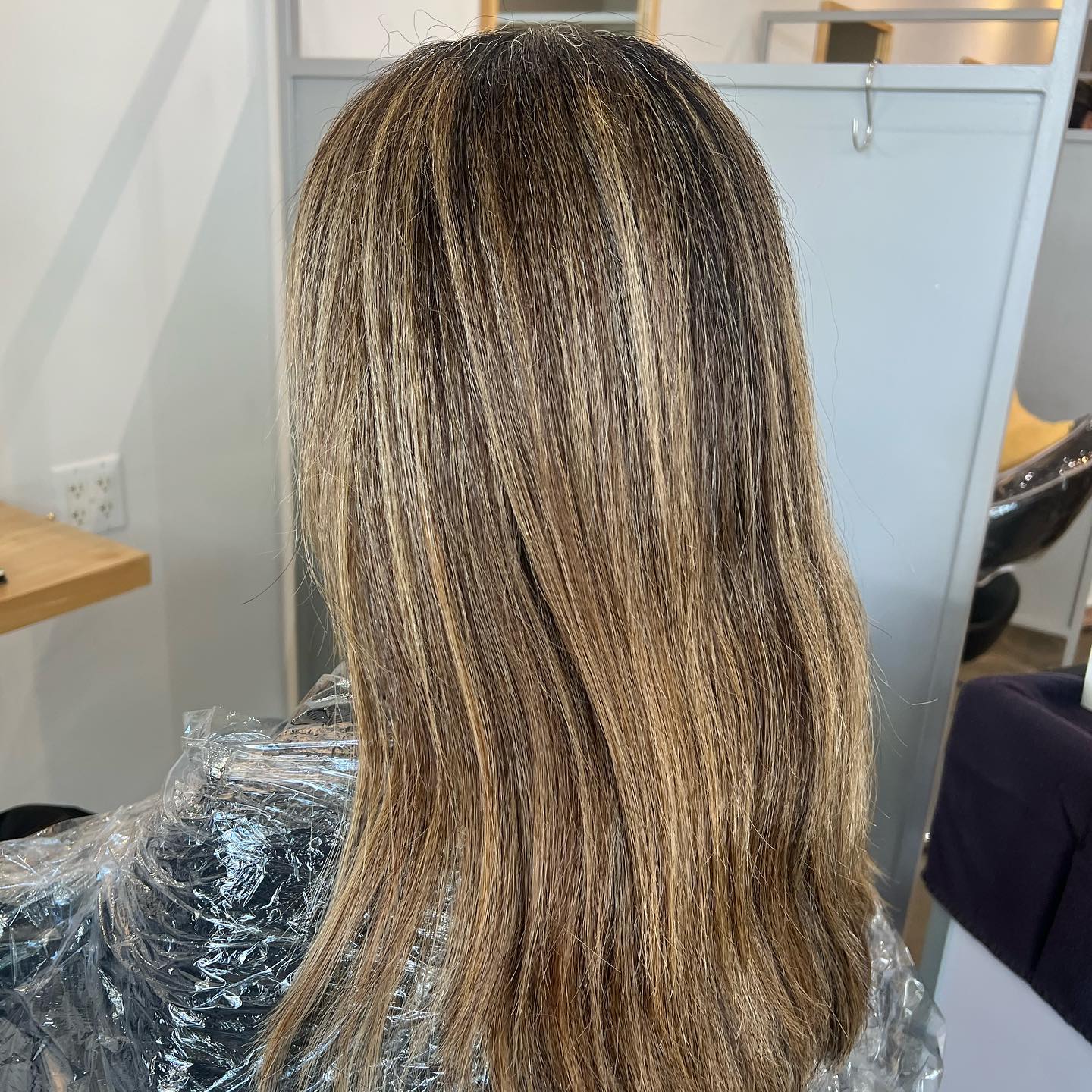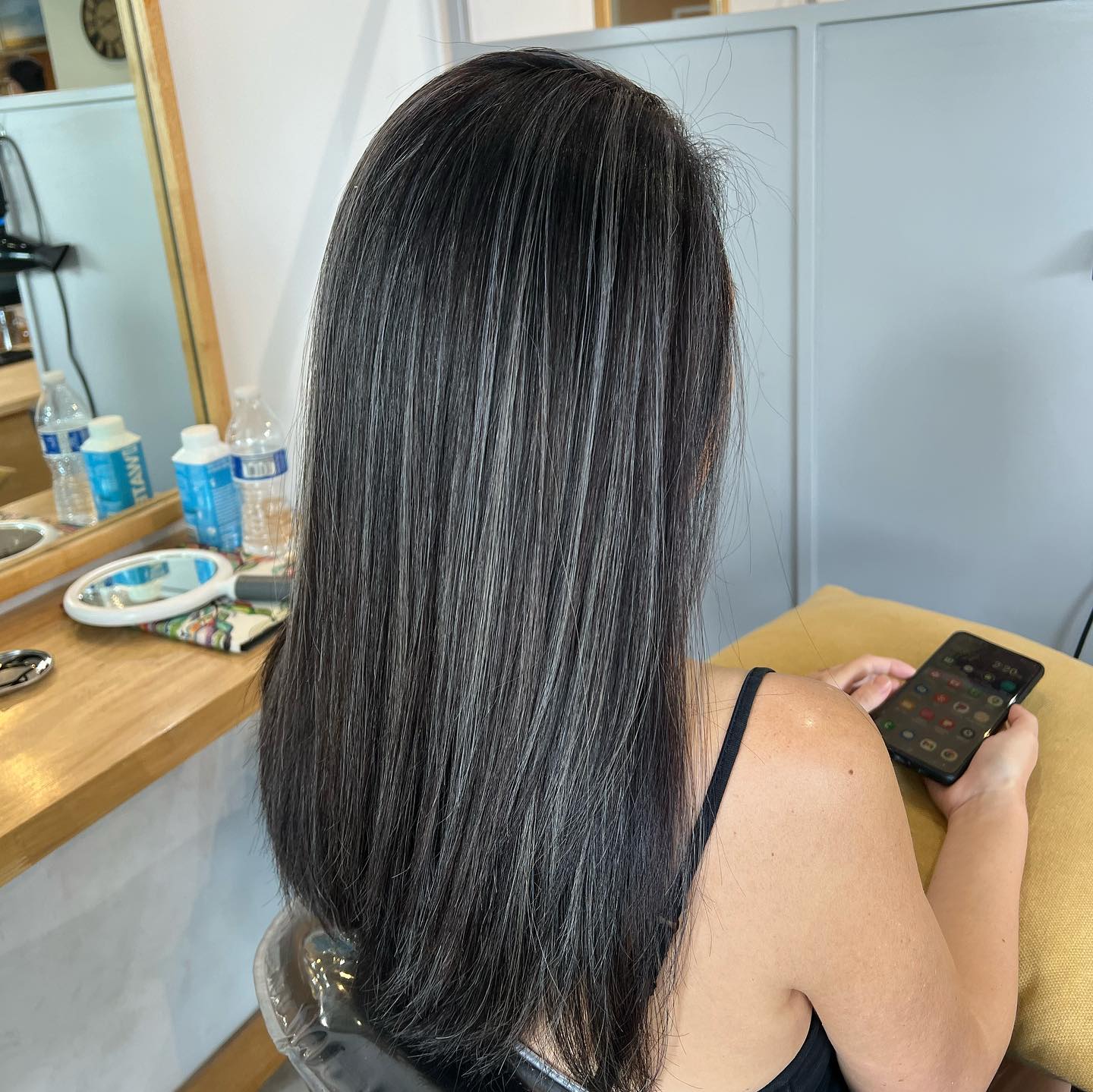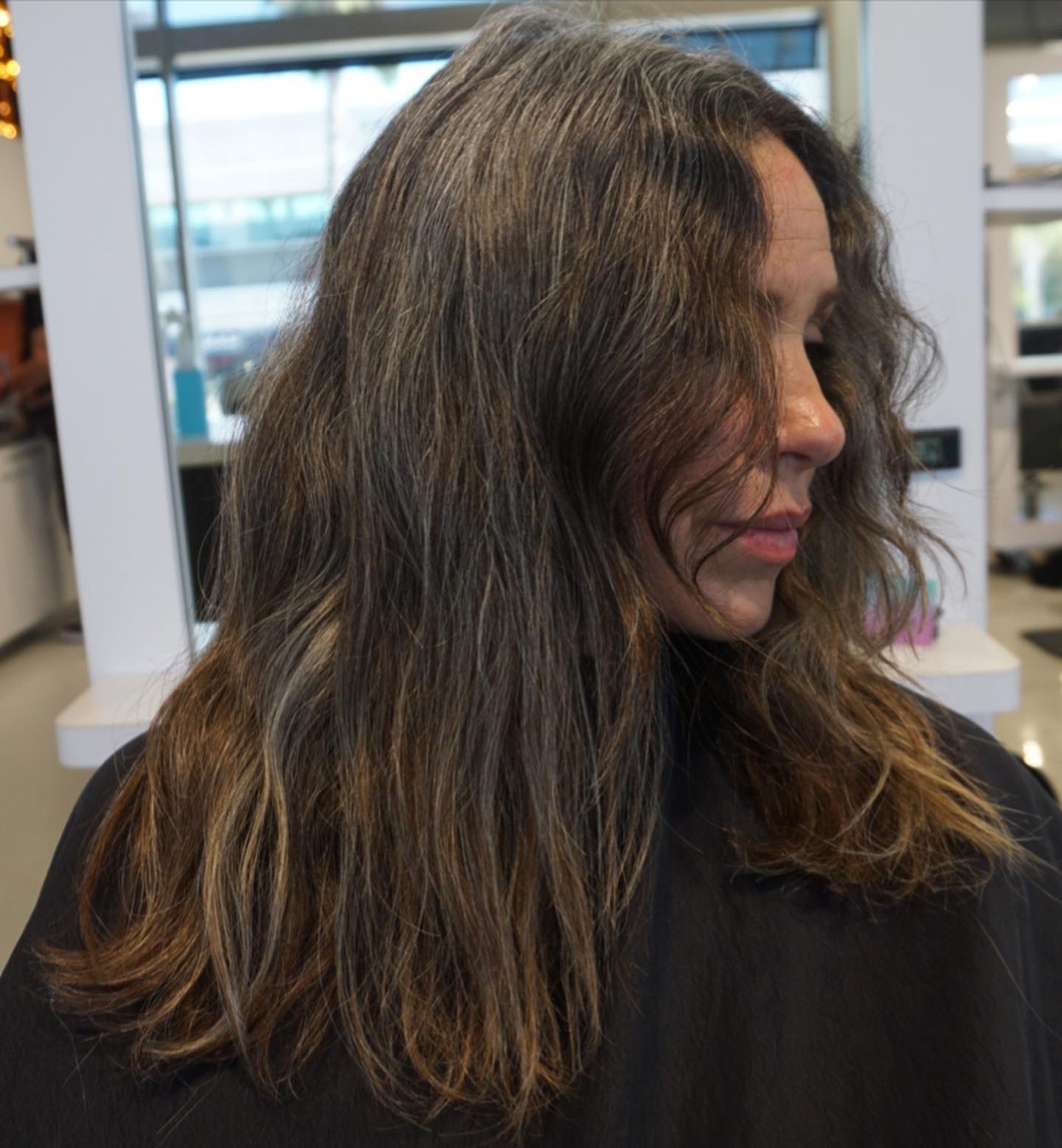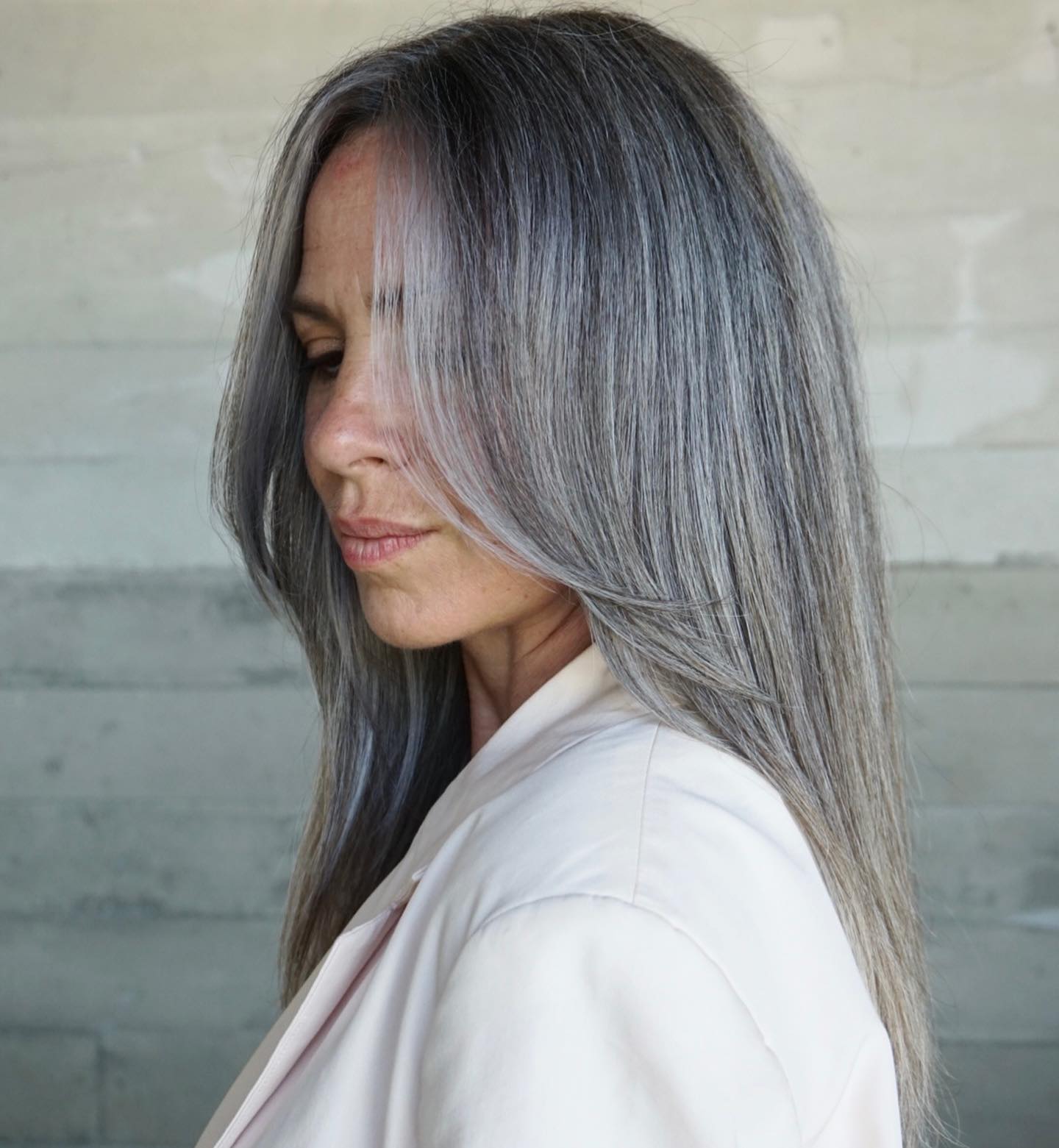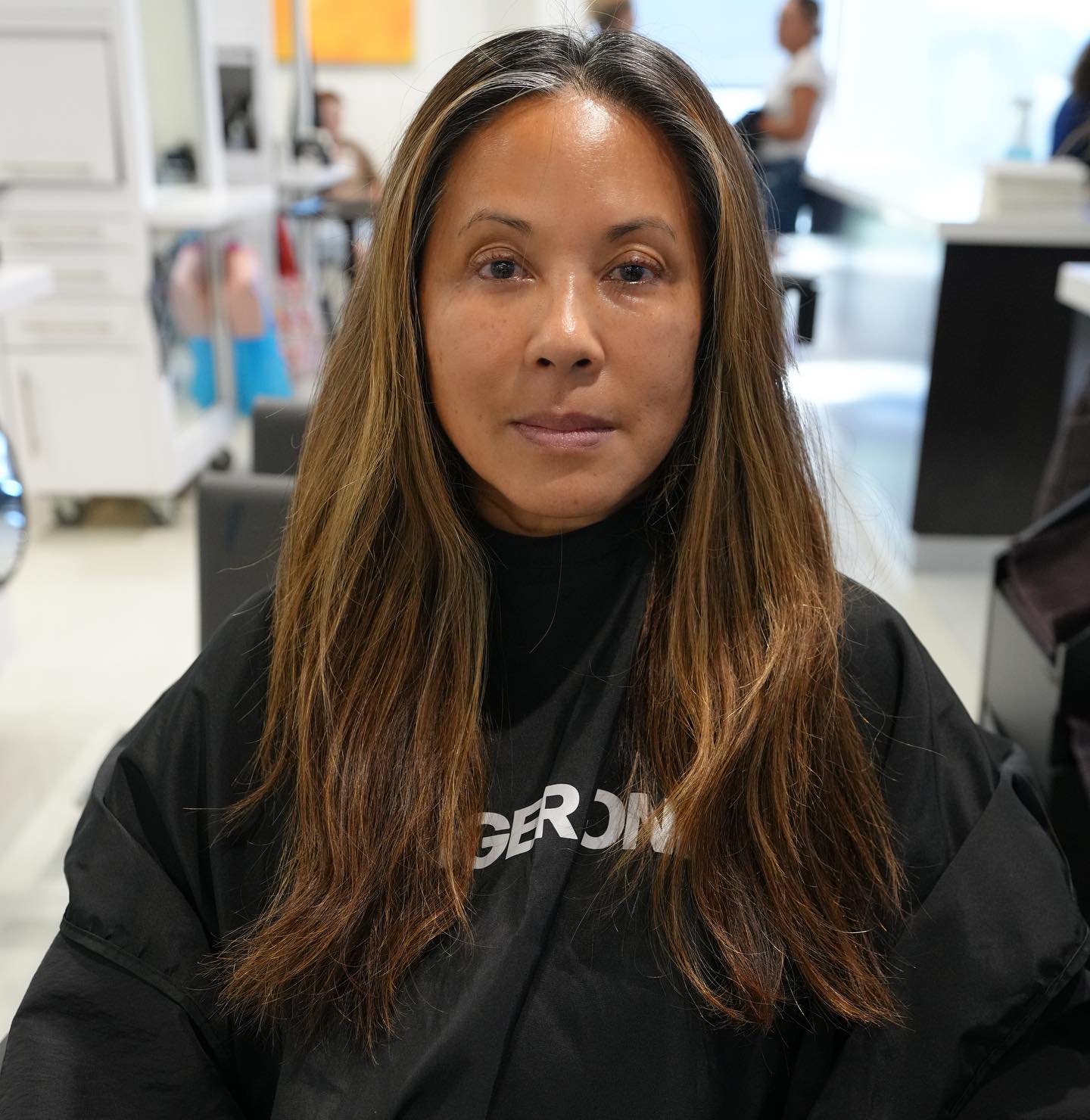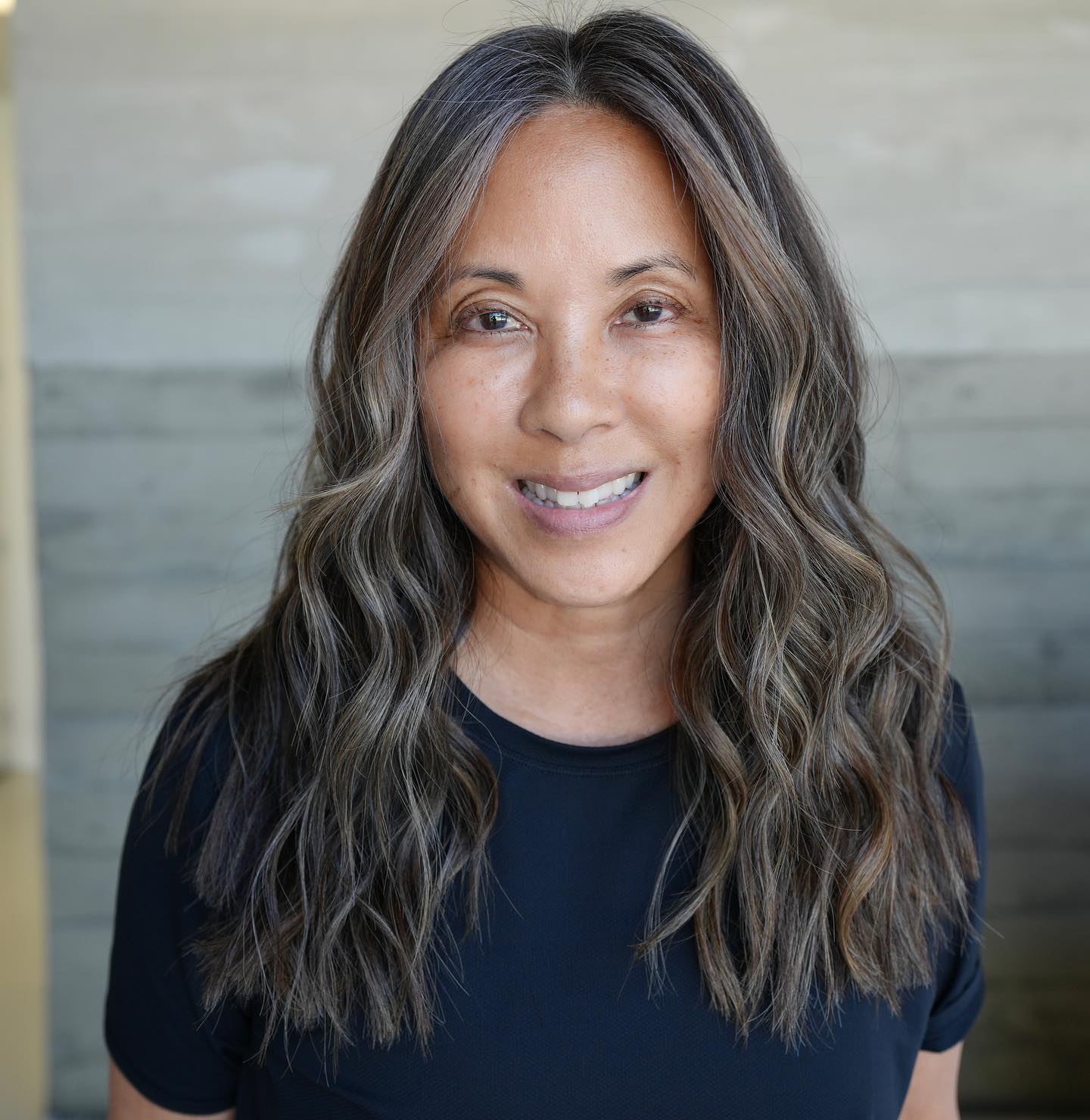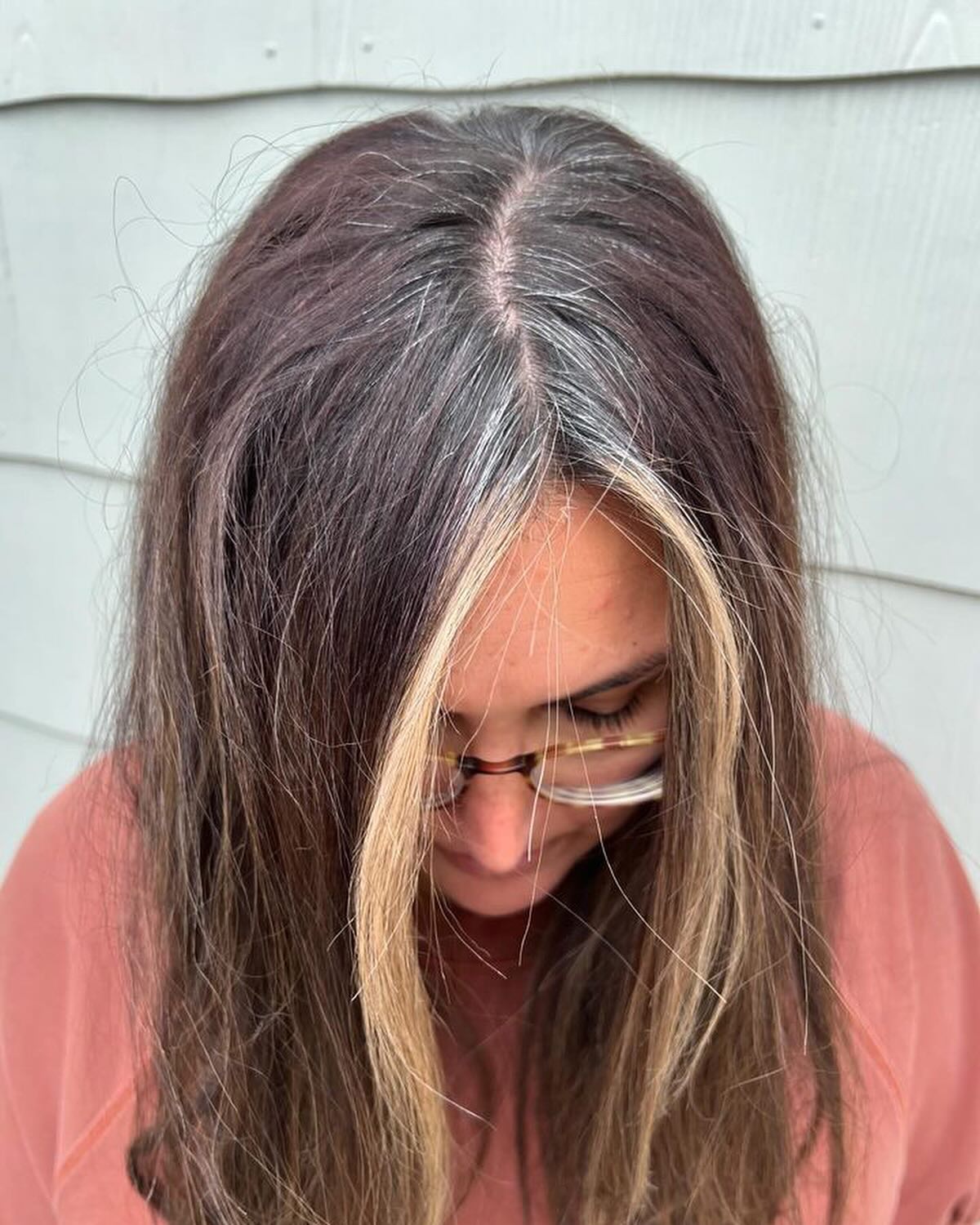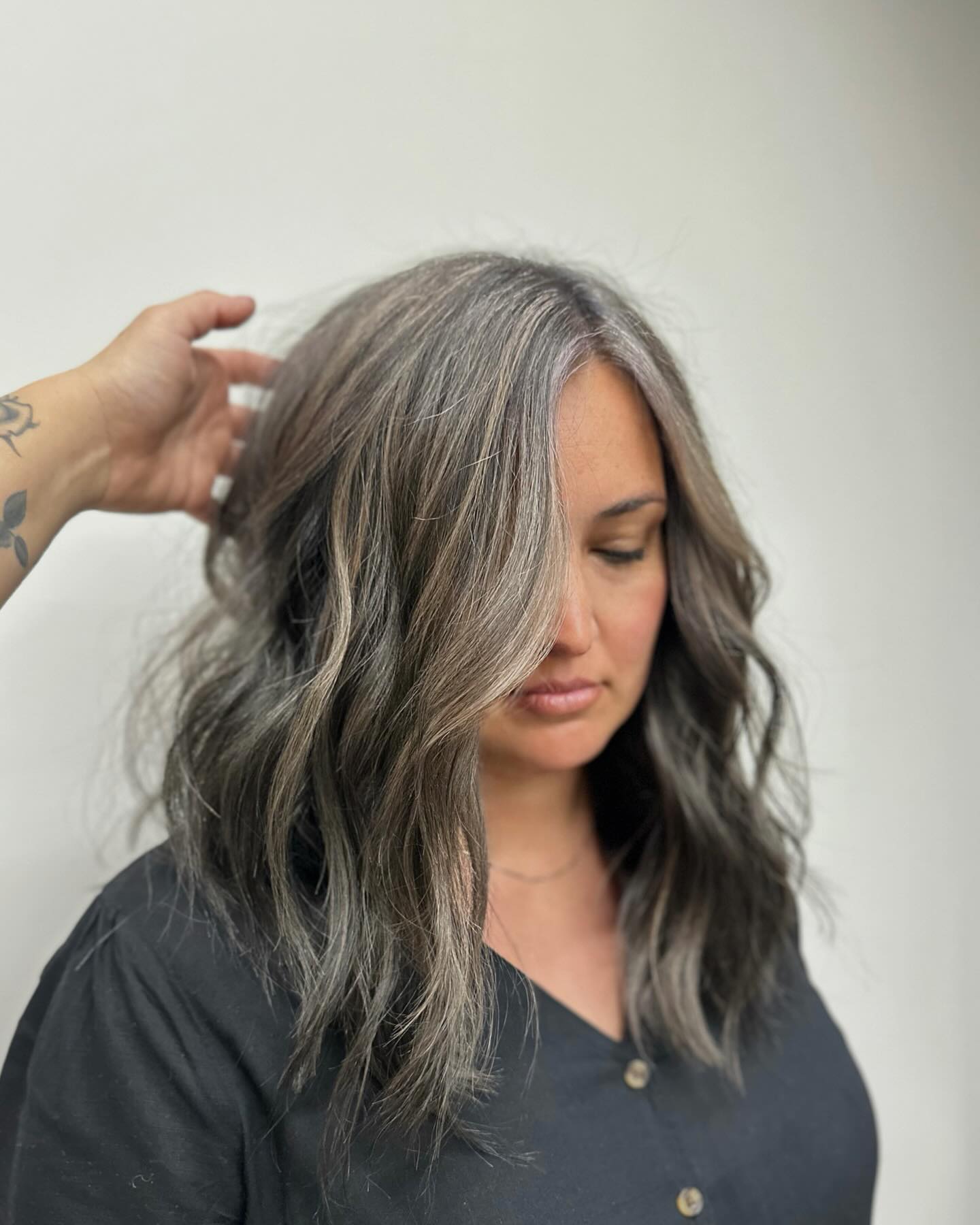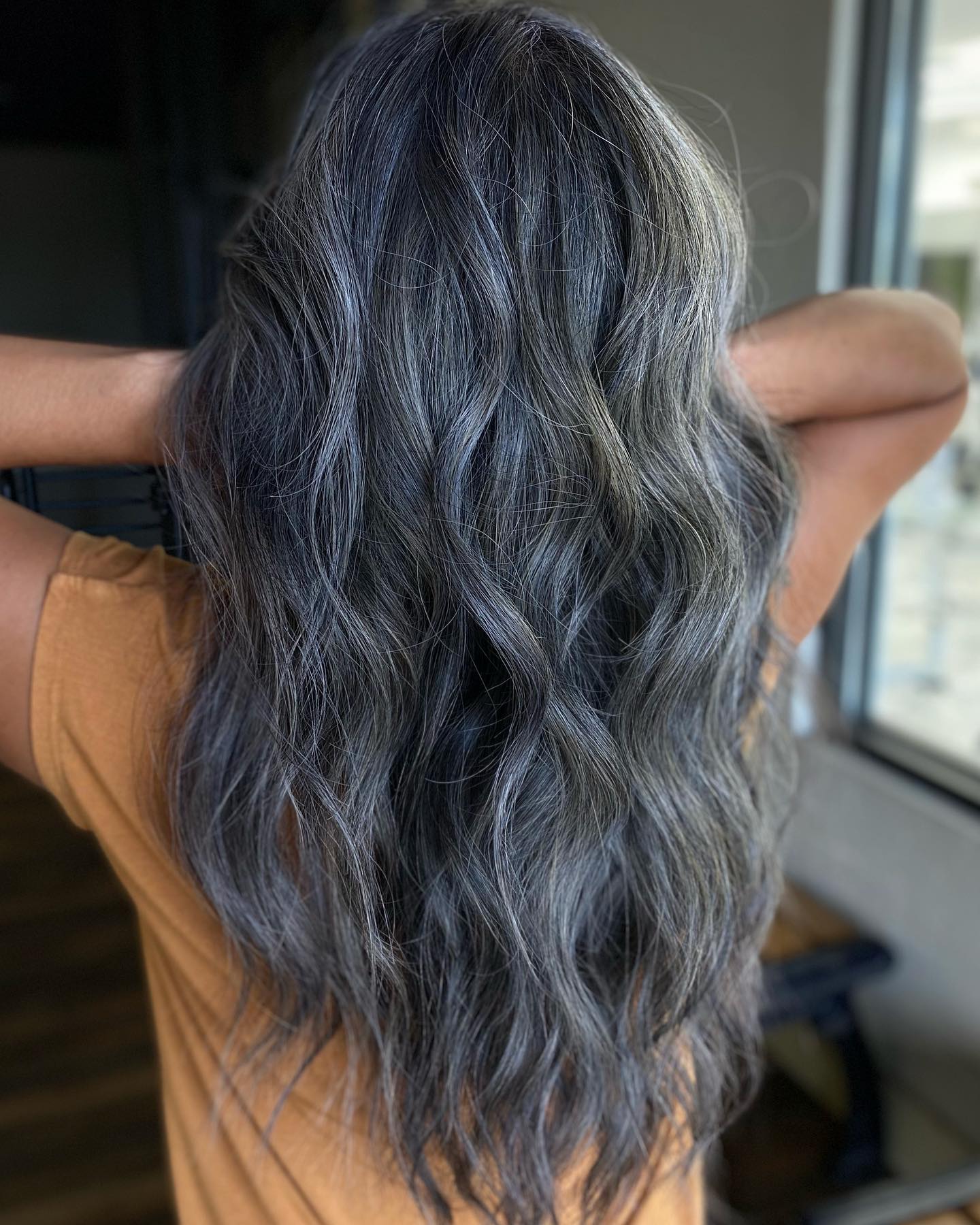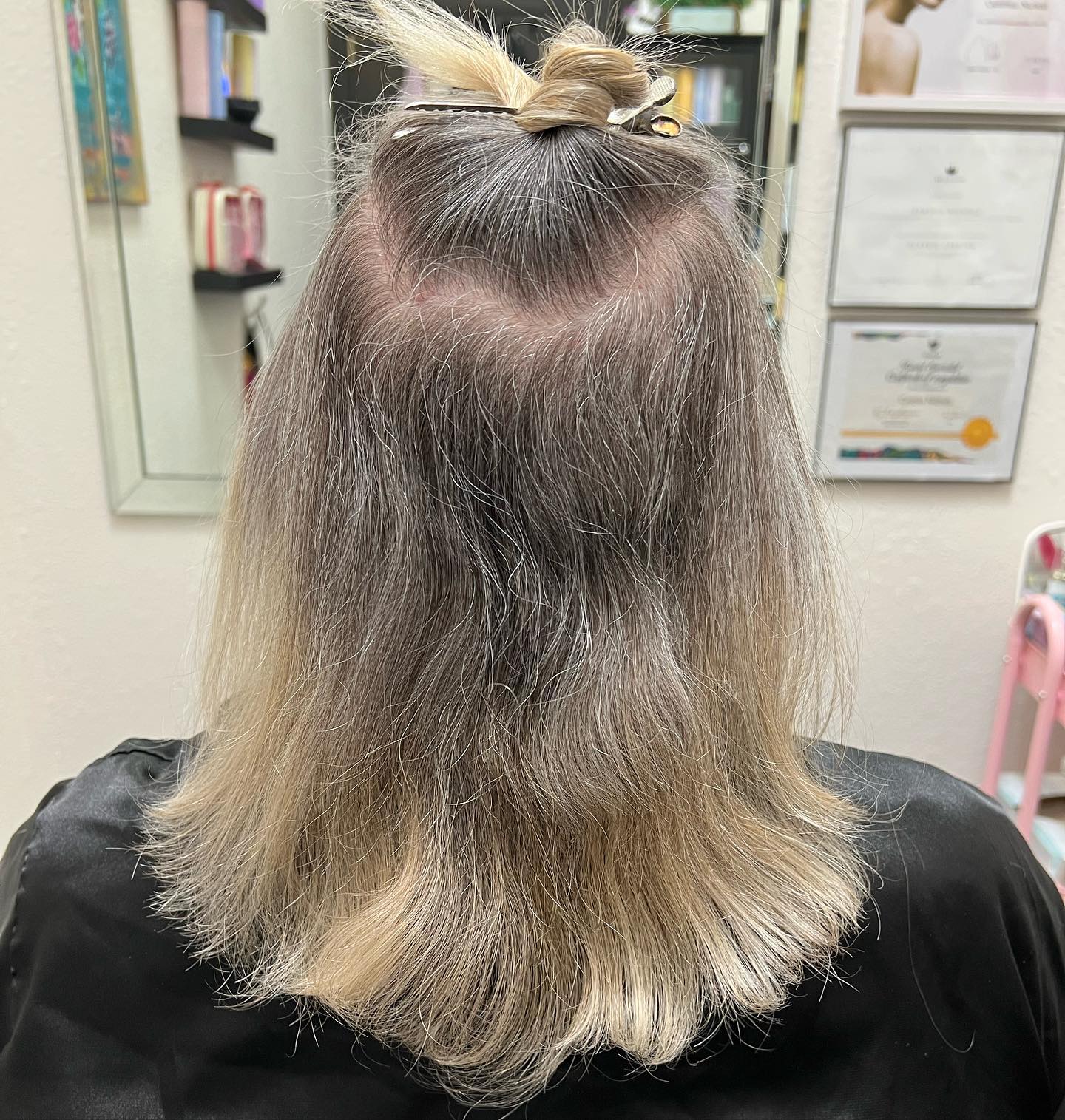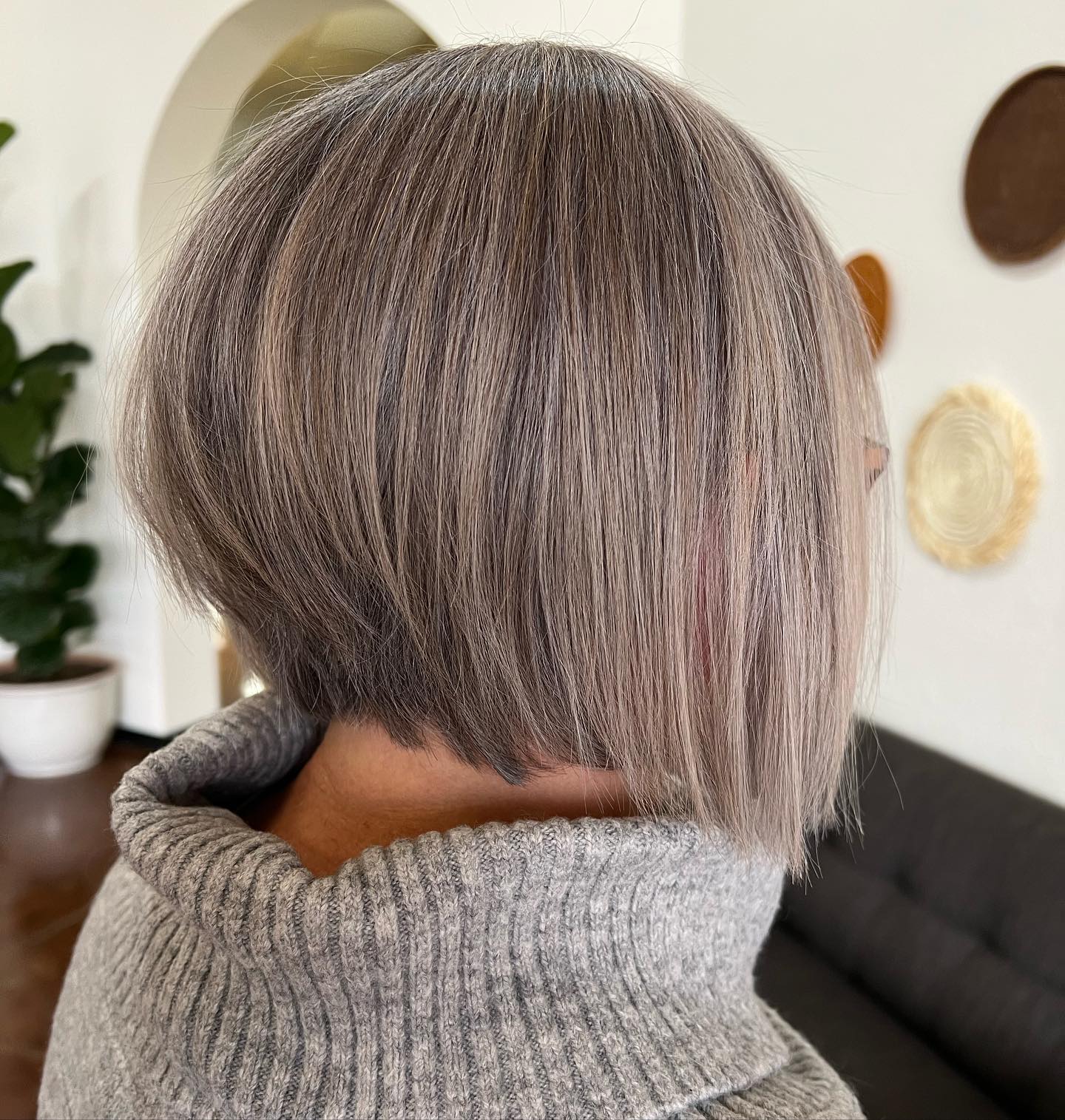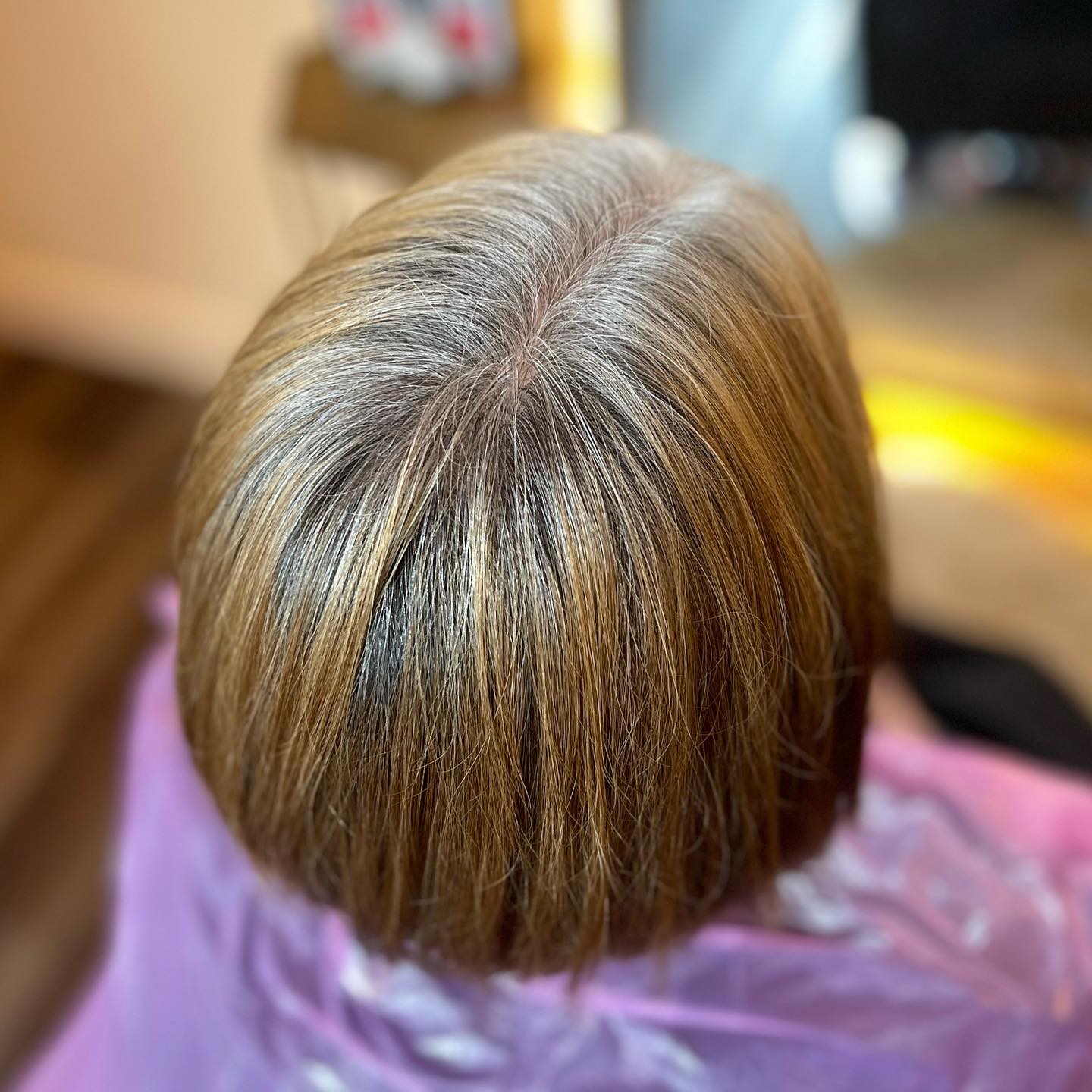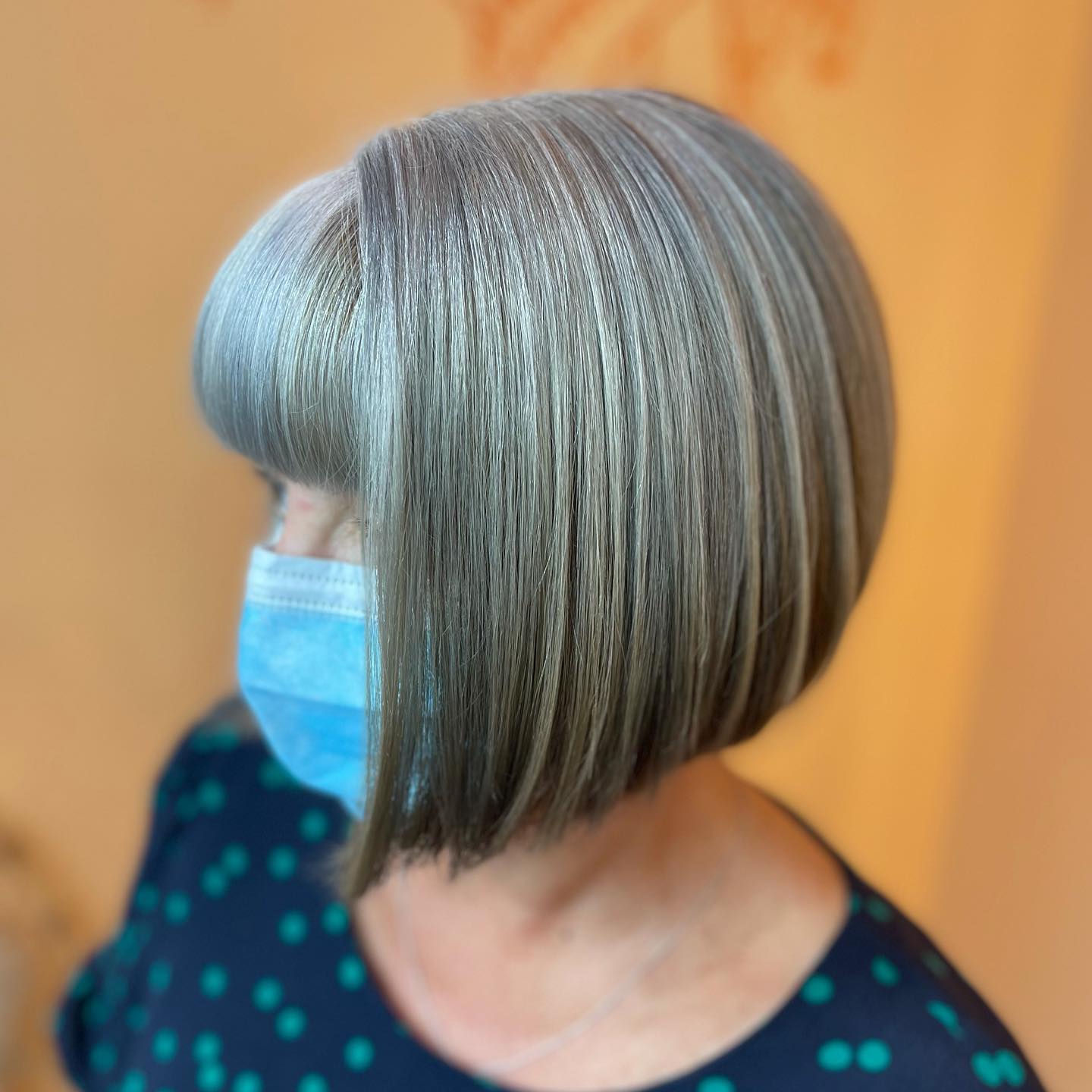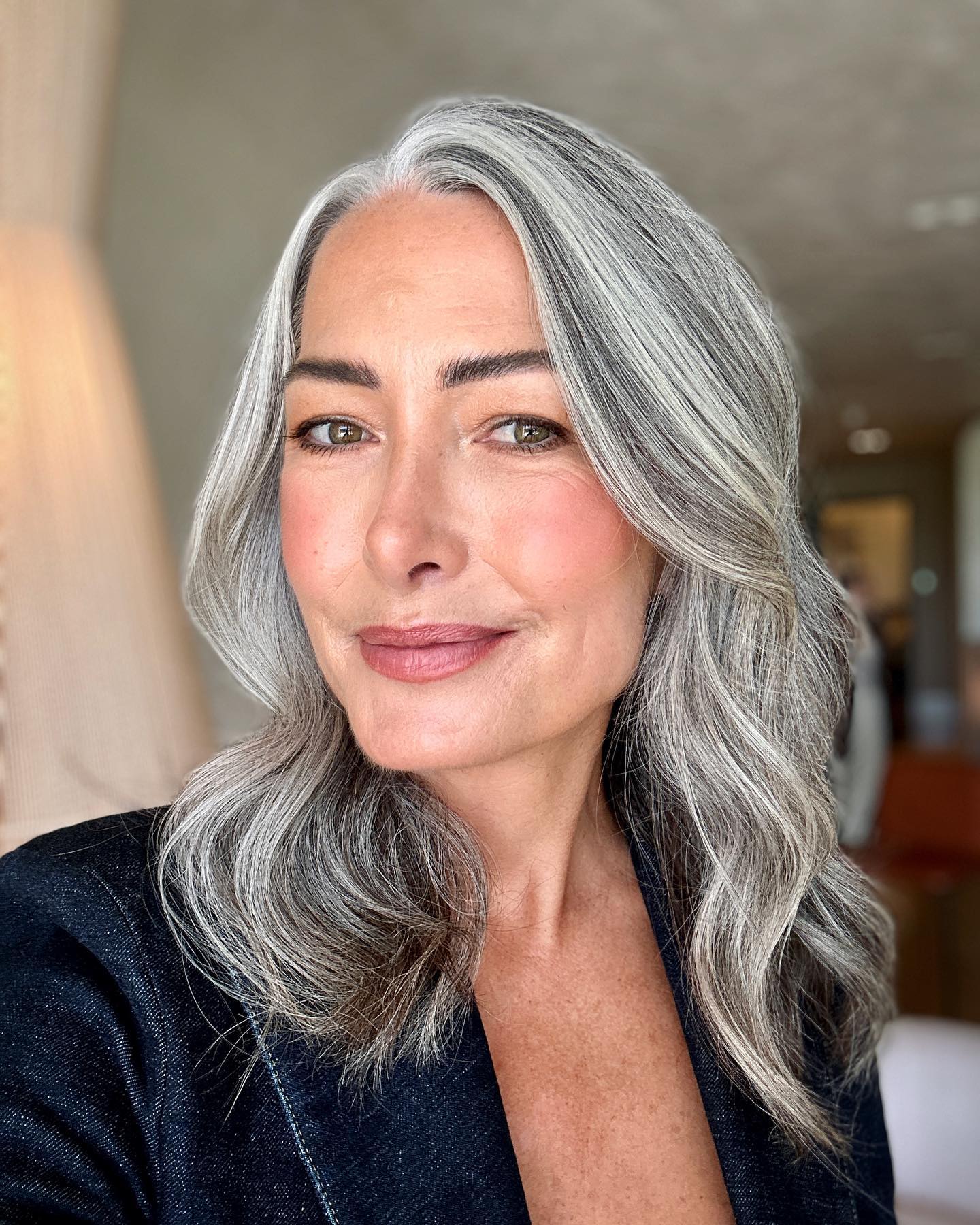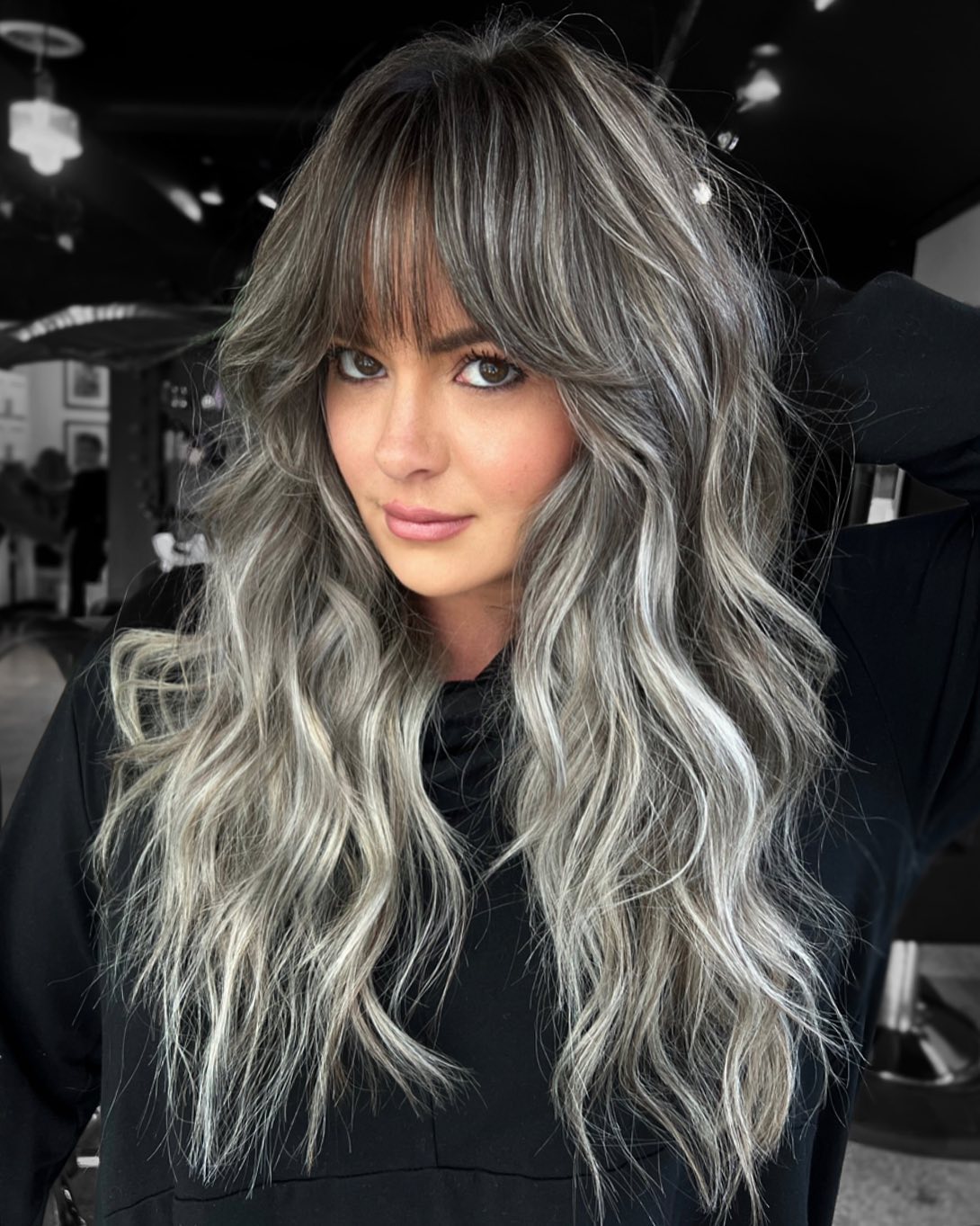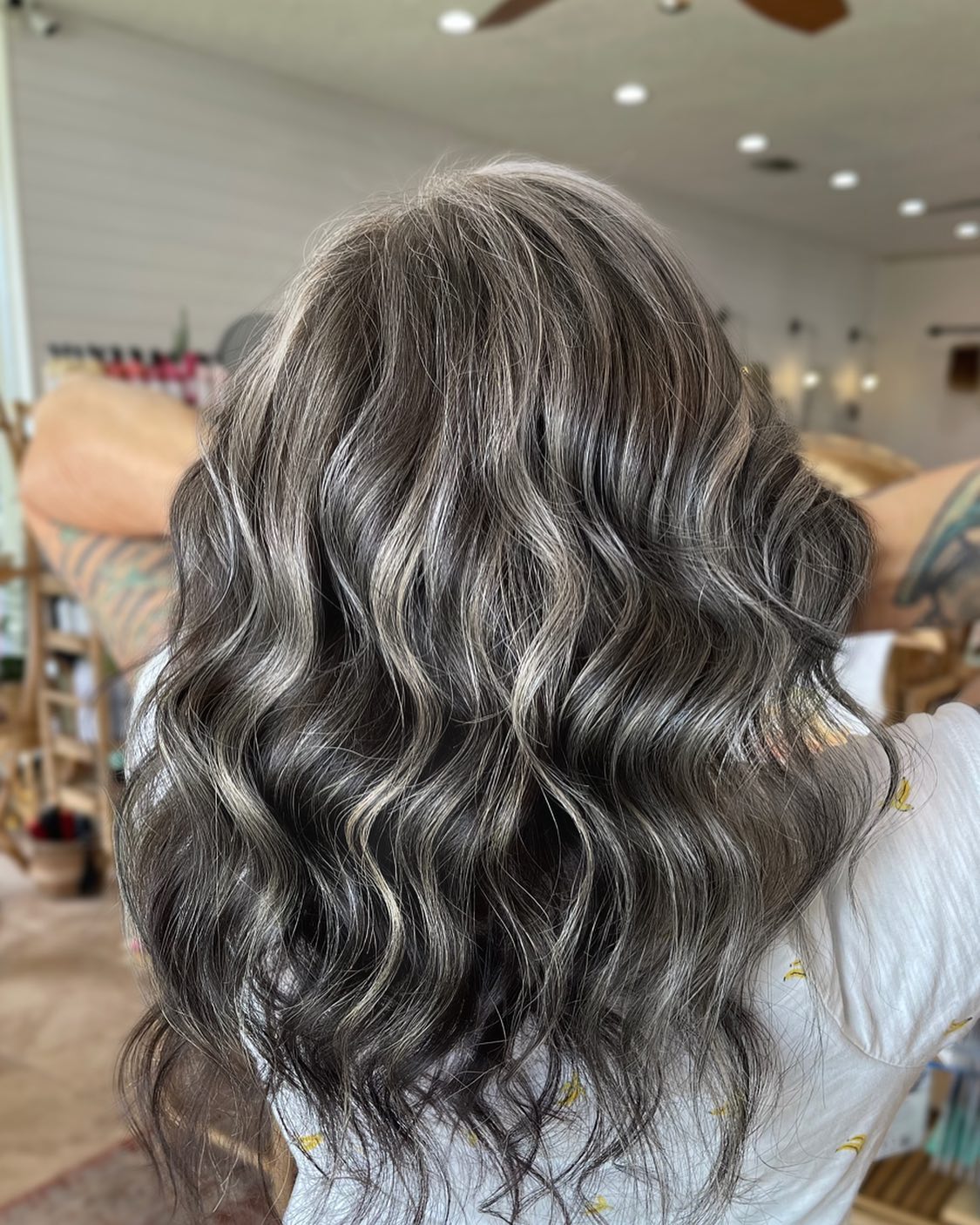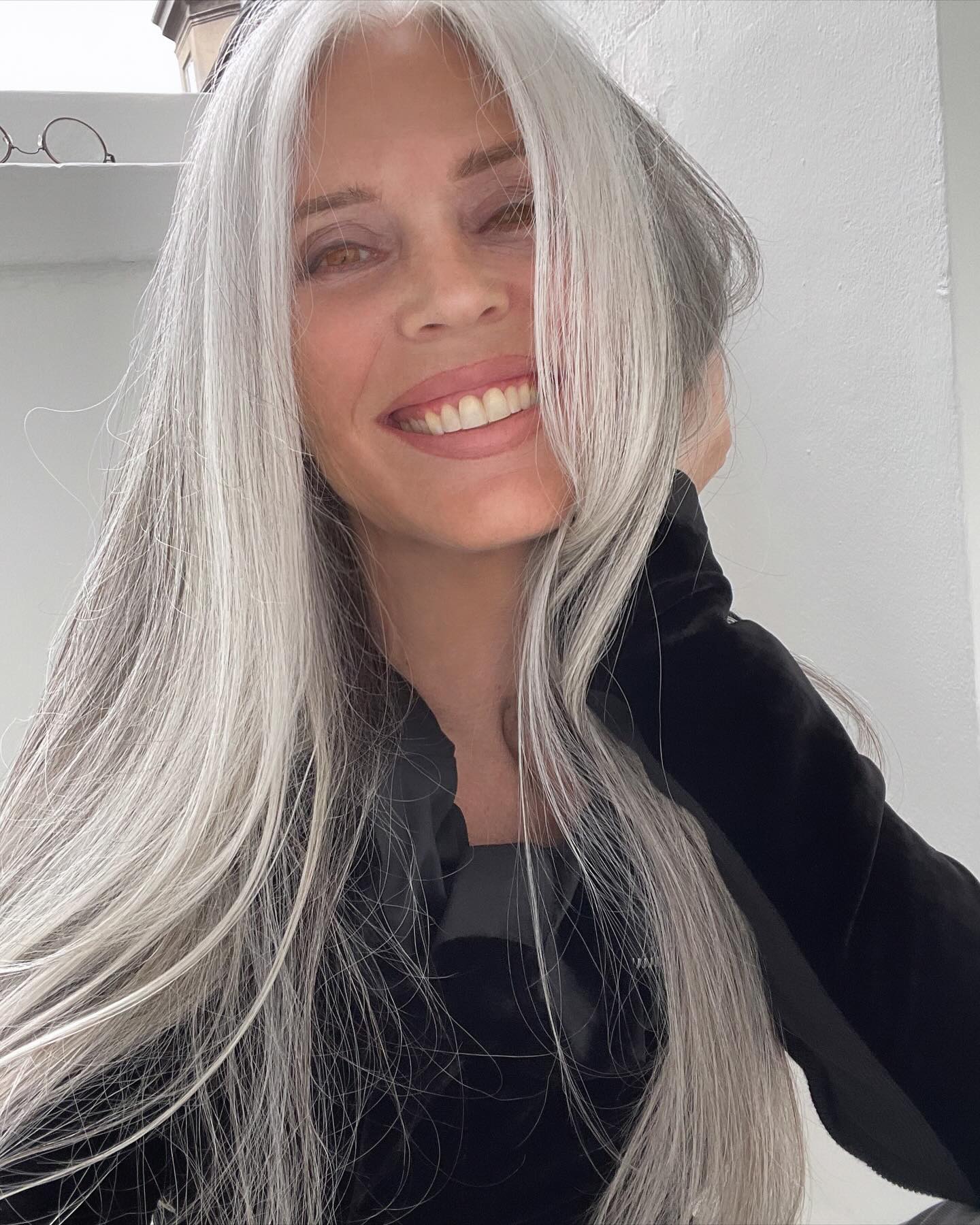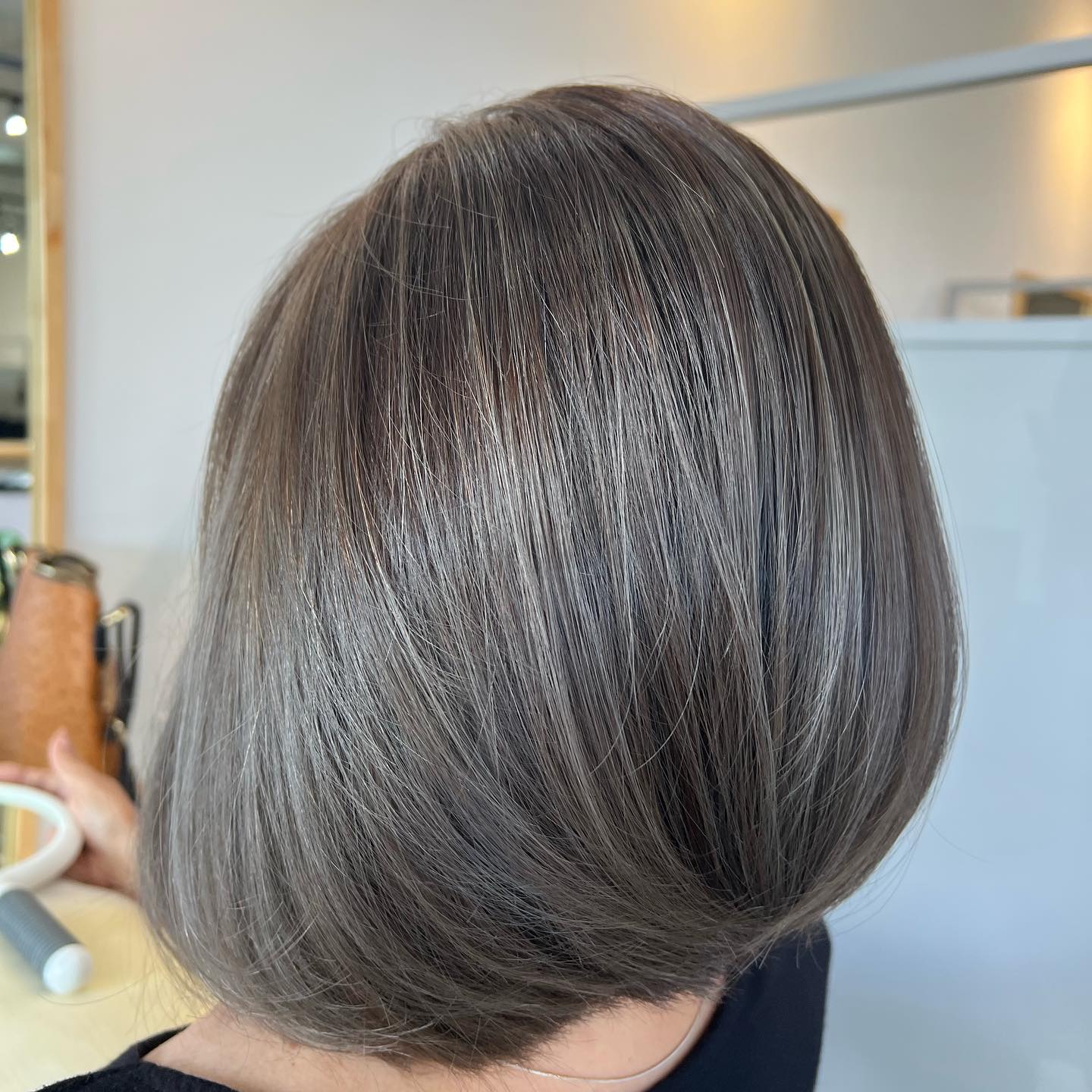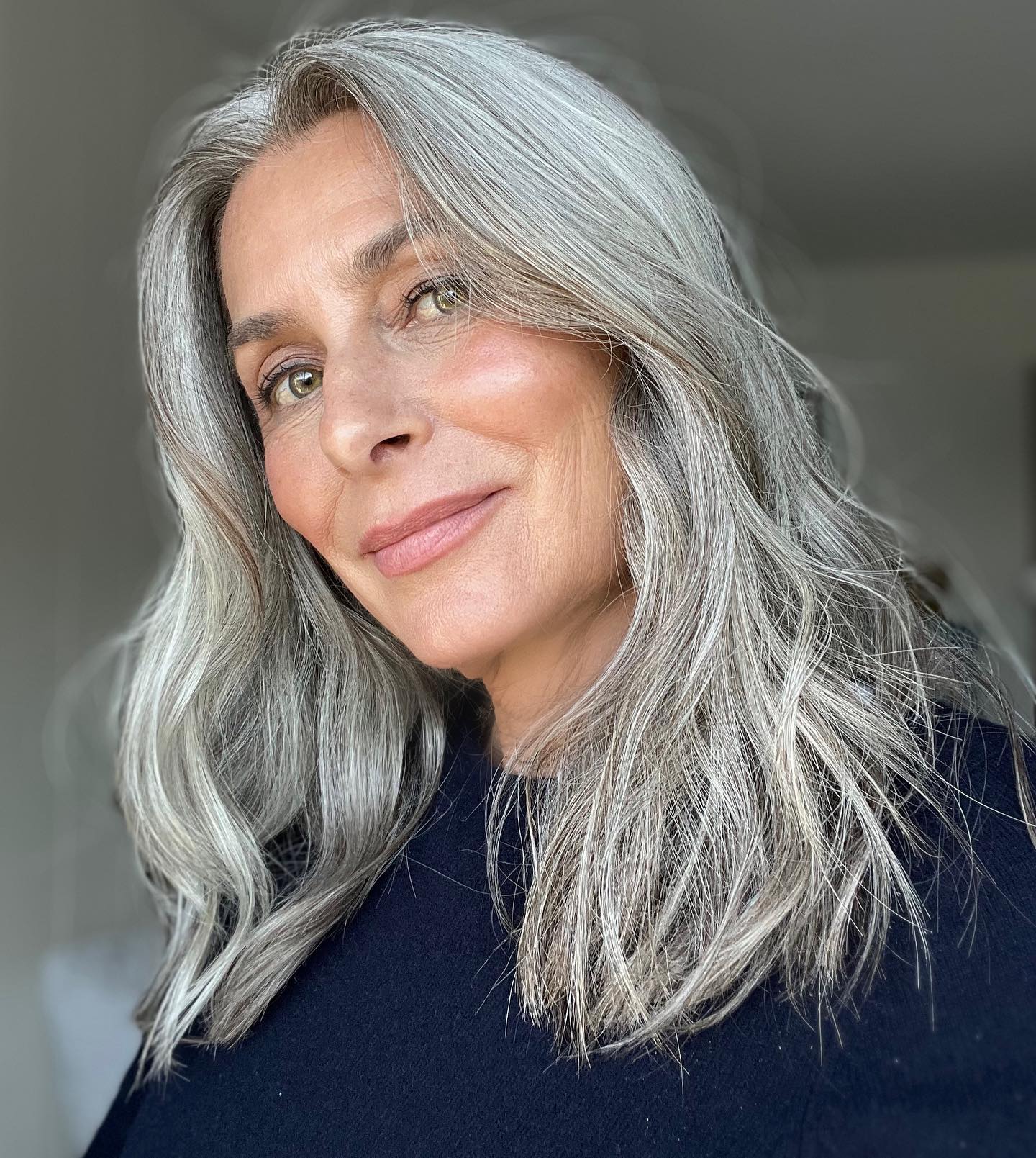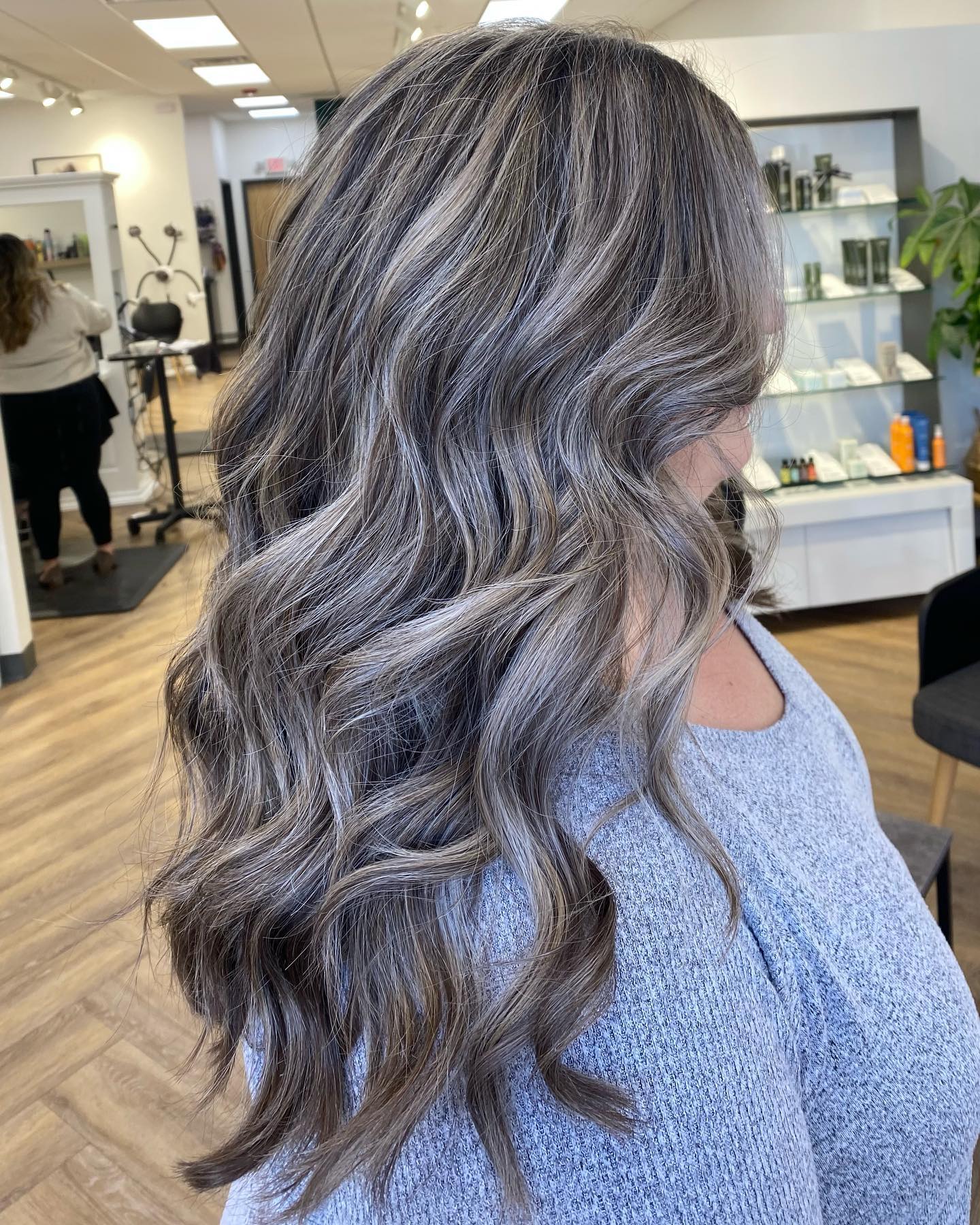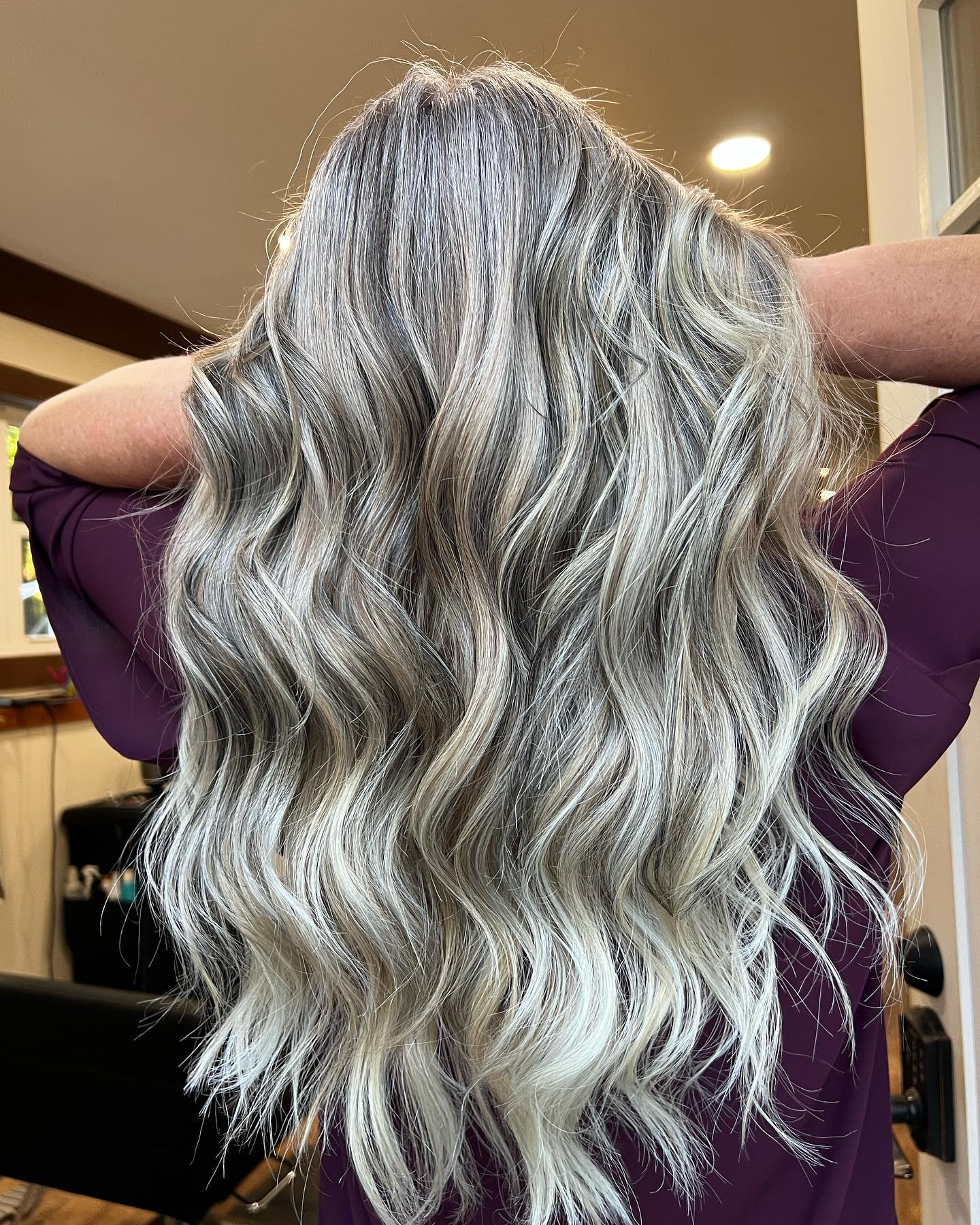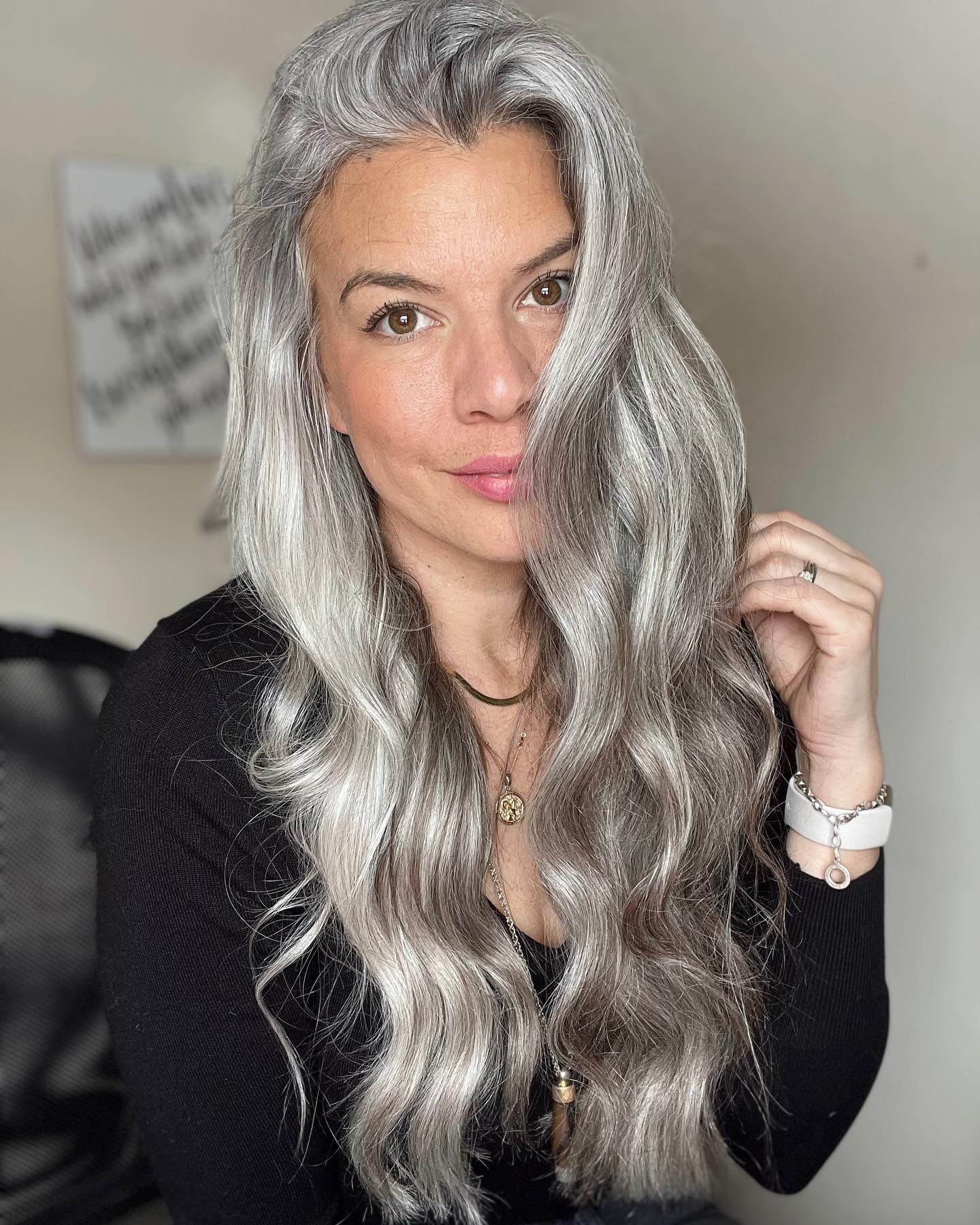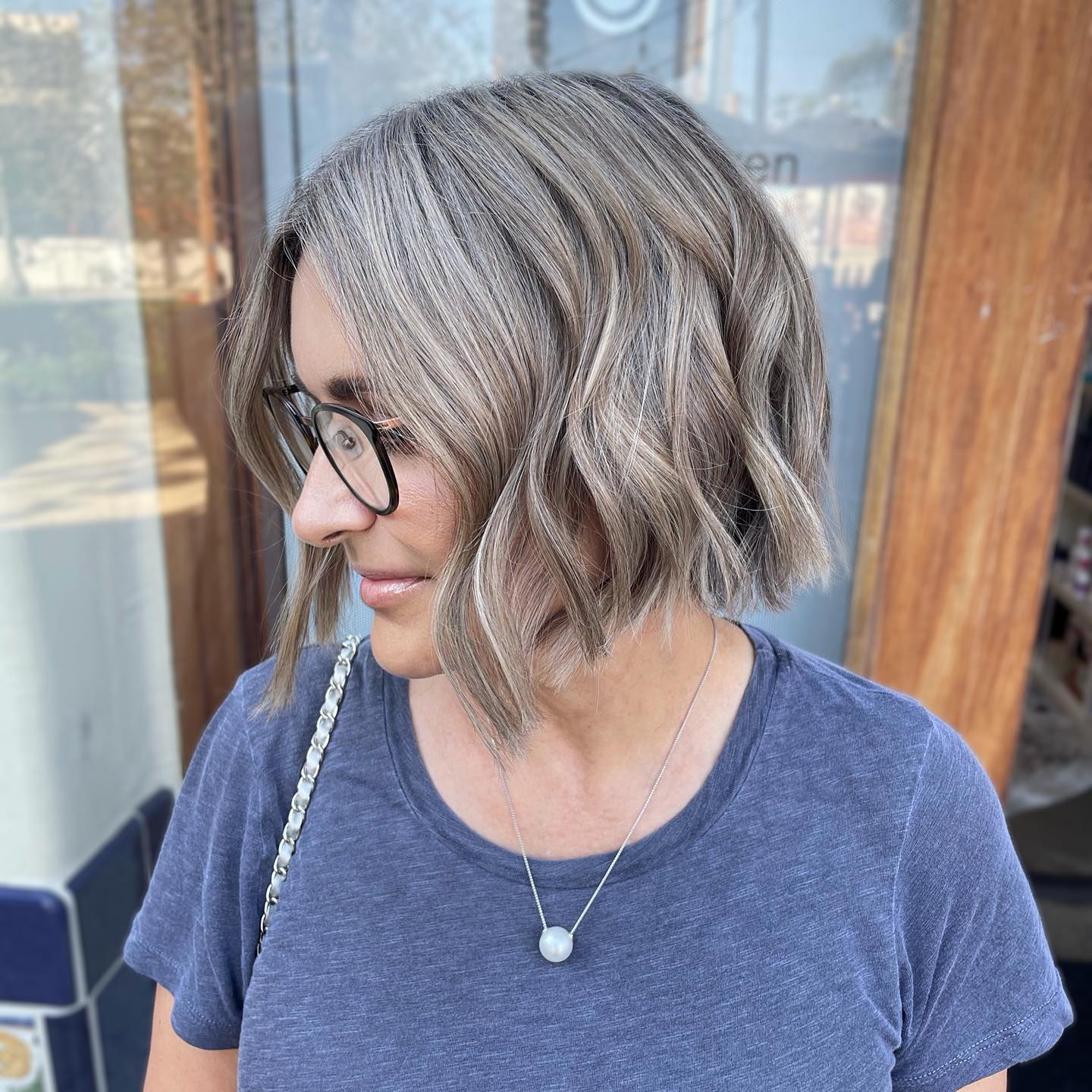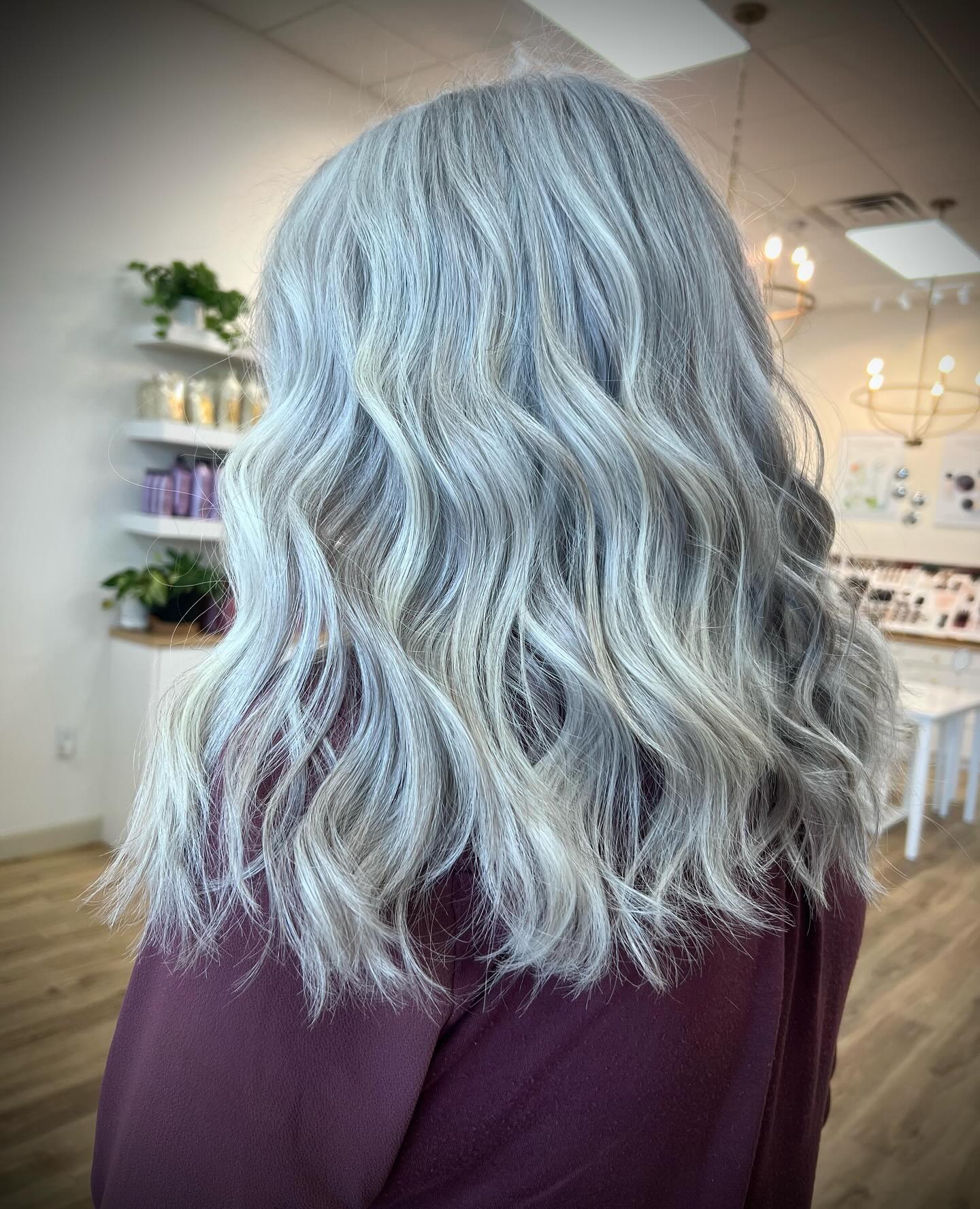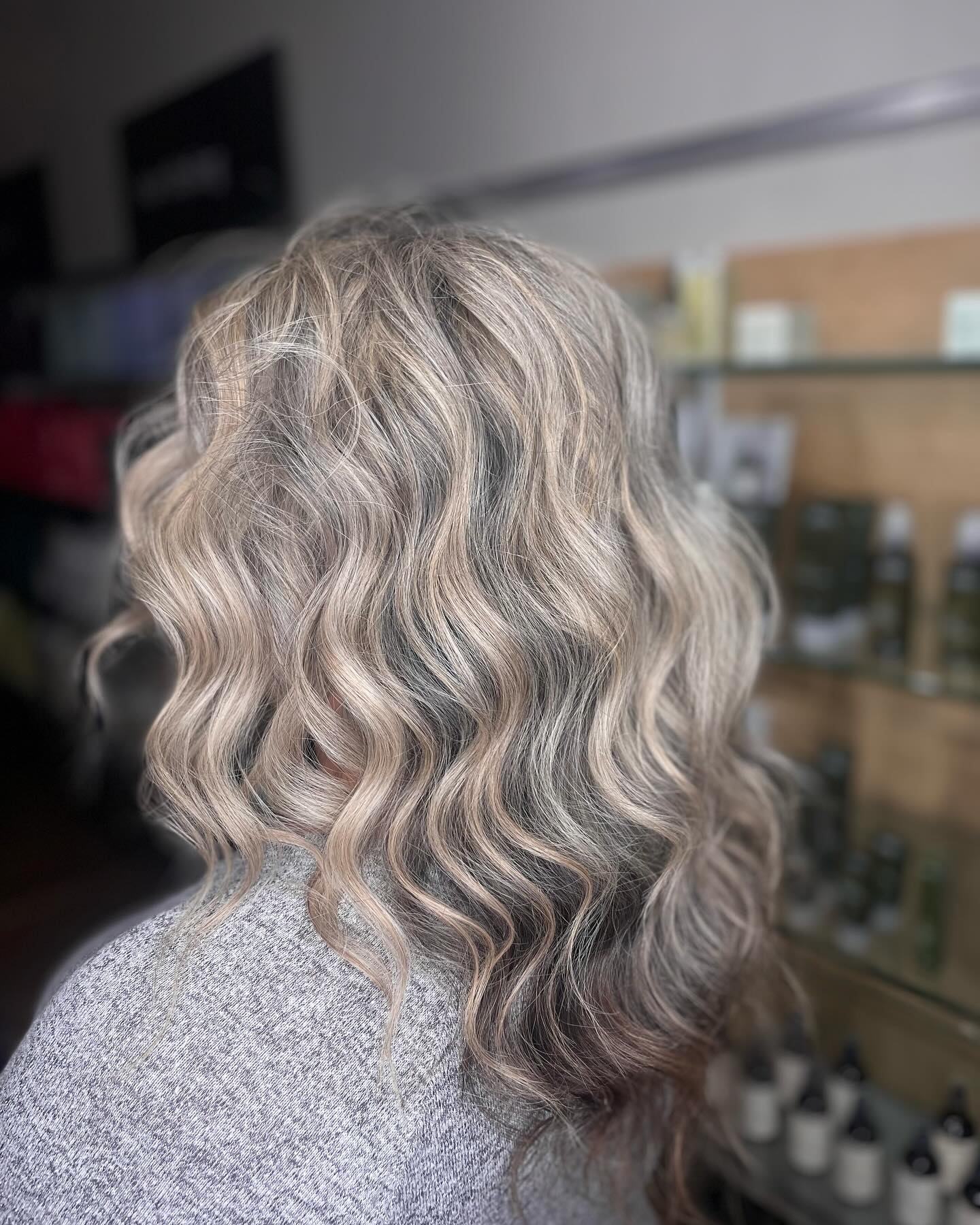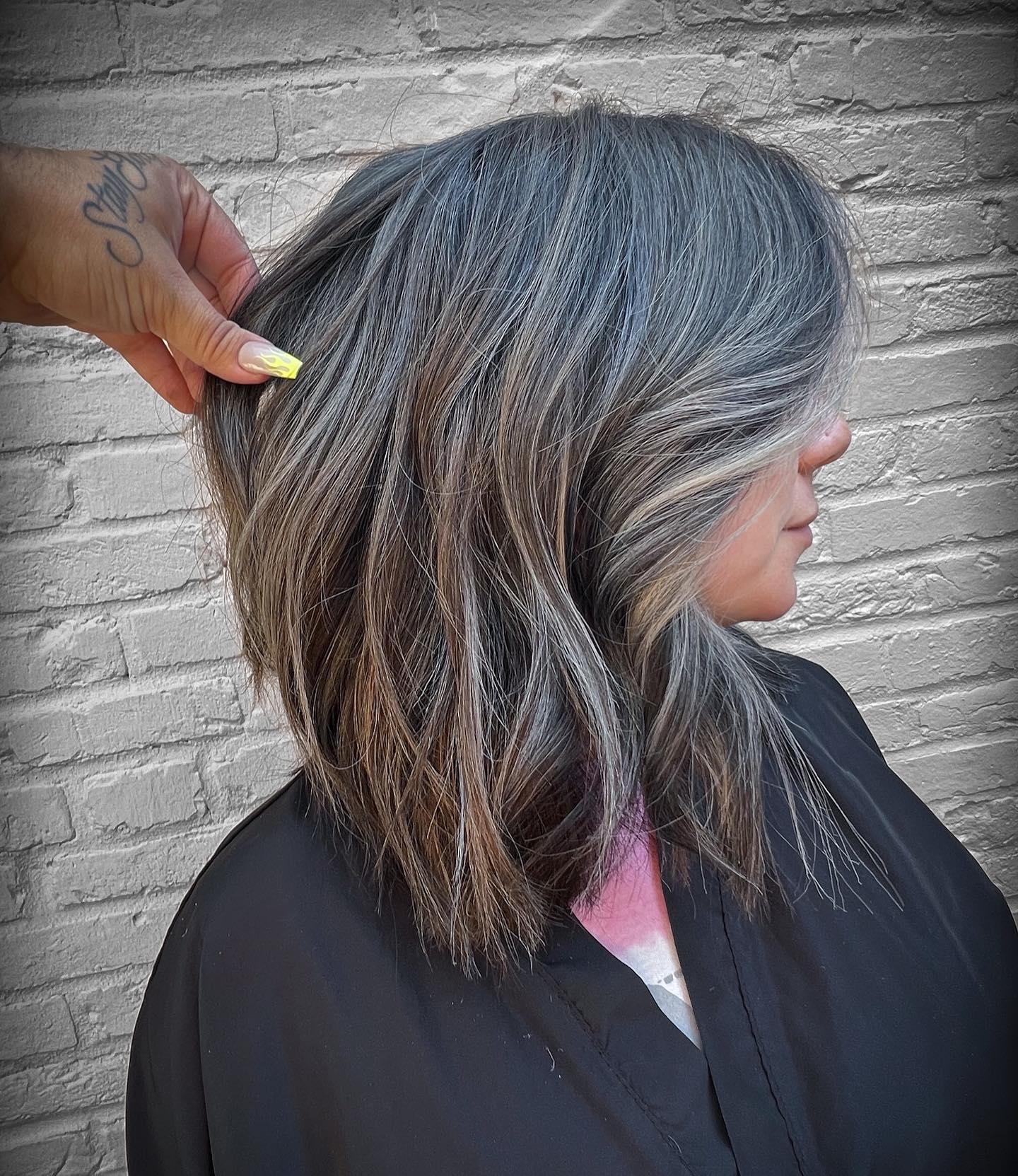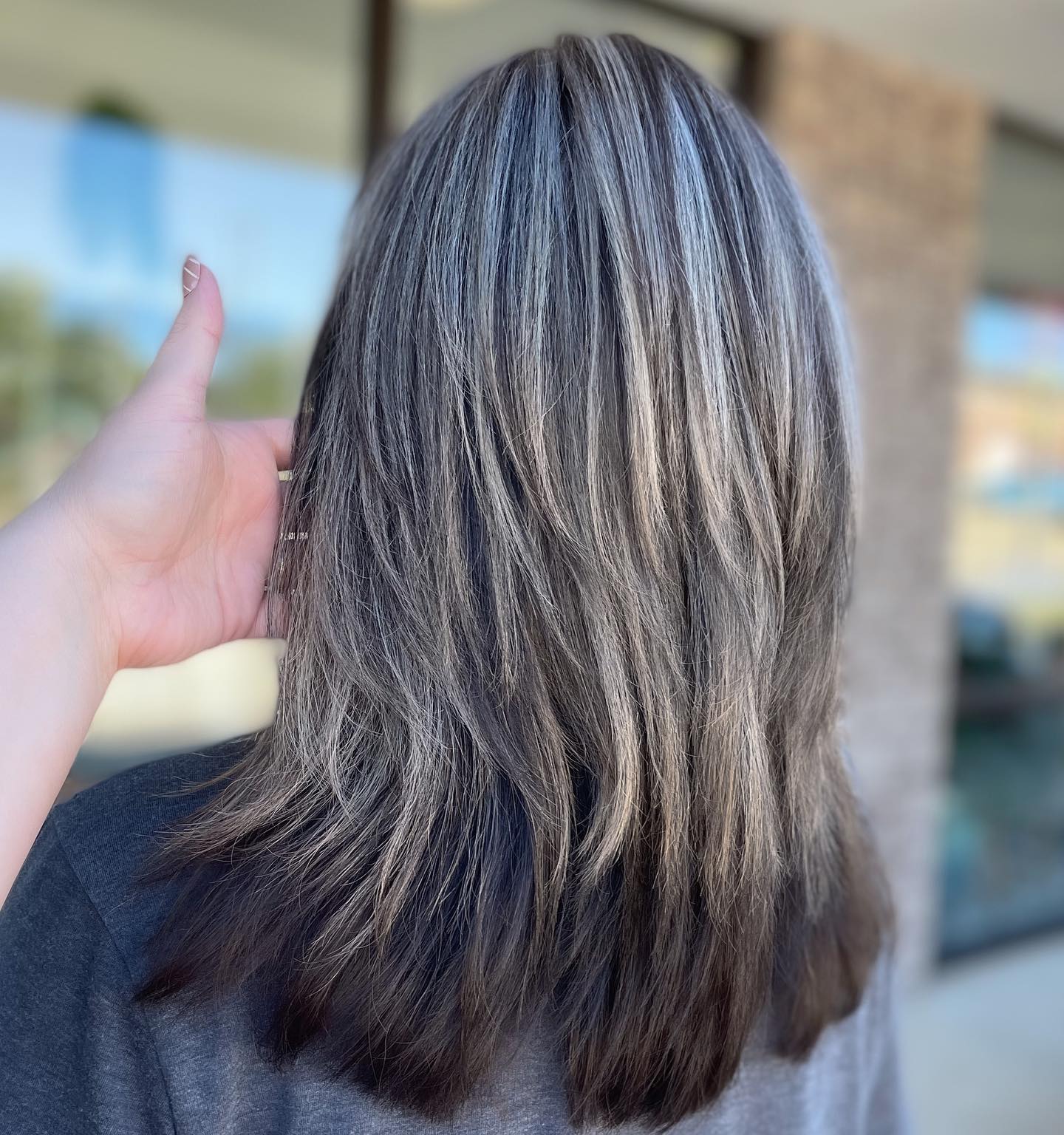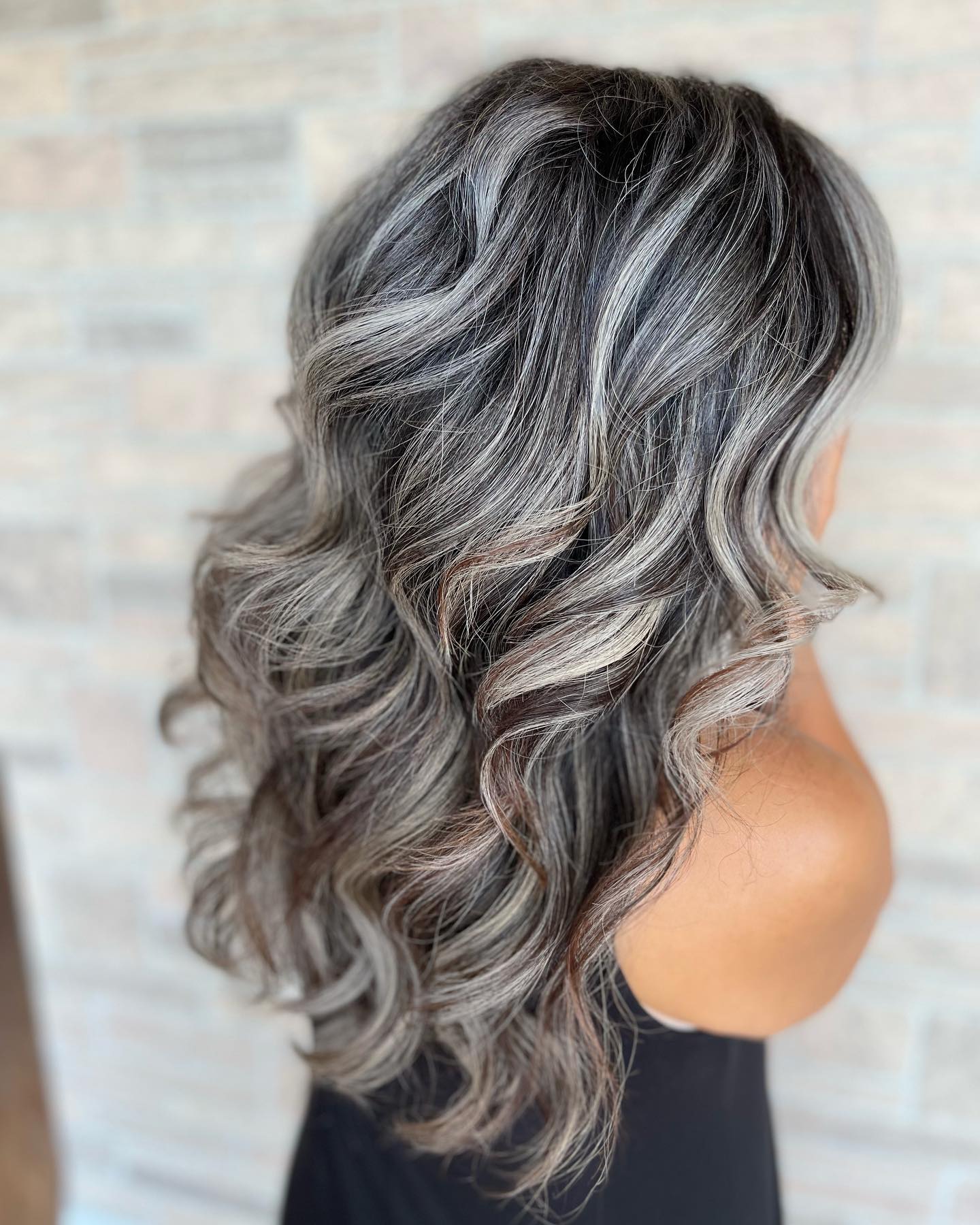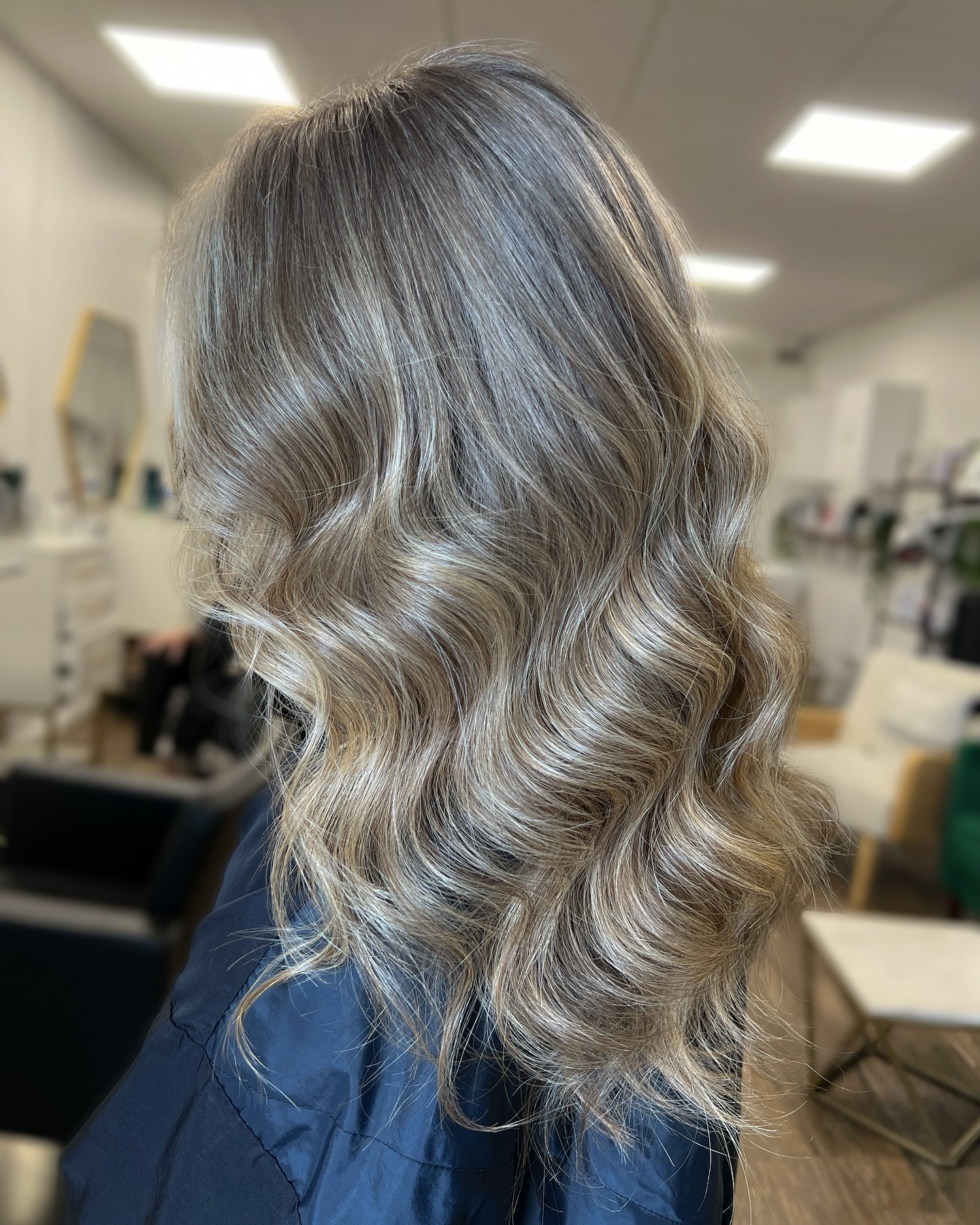Has dying your hair turned into a chore and isn’t a fun way to pamper yourself any longer? When covering up grays becomes the only reason for colorist appointments, it might be the right time to think about your options. If you’re thinking about going natural, cold turkey isn’t the only way to embrace the sparkles in your hair.
Gray blending is a coloring technique that provides a smooth transition and helps you evolve your hair color. Seamlessly blending your grays with your natural hues, it provides a soft line as your hair grows out, giving you a blended multi-tonal effect.
Ahead, learn everything you need to know about the process and browse our pick of the best gray blending examples and before/after looks for your next salon trip inspiration.
Related: -15 Subtle Reasons People Stop Loving Their Hair as They Get Older
What Is Gray Blending?
Gray blending is a hair coloring technique that incorporates any gray hairs you might have into your overall hair color. Using a mix of foil highlights and lowlights, this process creates a bespoke look based on your individual pattern.
Instead of completely covering the gray, gray blending seamlessly mixes it into your existing color, giving you a softer, more natural look. Compared to full-coverage color, this is a low-maintenance option you can stick with or use it to gradually transition to an all-gray look if you wish.
How Does Grey Blending Work?
Usually, the client who wants gray blending has permanent color, used to cover grays. Your colorist will advise you to stop dying your hair for as long as possible before your appointment date, since at least a few months worth of regrowth are necessary for the process.
If your hair is dyed a dark color, first the dye will need to be lifted, then your colorist will bleach as necessary. Next, using your roots as a guide, they will apply lighter or darker shades creating babylights, highlights or lowlights to match your roots. The final step is applying tone or gloss to balance and neutralize brassy or yellow hues and brighten your locks.
This method creates a tailored look that works with your specific gray pattern, perfectly blending the regrowth to avoid a hard line of demarcation.
The bad news? It’s possible but challenging to achieve this in one session, mainly because of the difficulty of lifting color. You would need to start with a significant amount of regrowth, sit in the chair for 10-15 hours and pay a large sum of money for a dramatic transformation.
Instead, a more common way to achieve gray blending is to do it over 3-4 sessions around 6-12 weeks apart, slowly lightening and blending your regrowth until a full blend is achieved.
Is Grey Blending Worth It?
Gray blending can be both costly and time-consuming. Depending on where you do your hair and what exactly you want to achieve, you’ll spend lots of hours and dollars on this process.
Depending on your gray pattern, amount of regrowth and the chosen method, the transition process can last up to a year and take about 3-4 salon visits to complete.
On the flipside, once you achieve the look you like, it requires almost no upkeep, so it saves you both money and time in the long run. Touch-ups are far less frequent—you won’t need to visit the salon every four weeks anymore. You won’t see a harsh line as your hair grows out as the gray is seamlessly integrated with your regular color.
Not convinced yet? Here are some gorgeous examples gray blending transformations that might do it.
Blonde Highlights Vs. Gray Blending
Blonde highlights on dark hair is a typical way of dealing with the emerging grays, but it’s not a solution—gray blending is.
Cold Turkey Vs. Gray Blending
Worried that going natural will make it seem as if you’ve given up? On the contrary, gray blending can give you a look that screams confident, elegant and stylish.
Lightening Vs. Gray Blending
Lightening your hair to make the grays less noticeable doesn’t really work and maintenance is still just as demanding. Gray blending will give you a natural, low-maintenance look.
Graying Brunette Vs. Gray Blending
The ineffectiveness of going lighter with the purpose of concealing gray hair is obvious as soon as your roots come in. Embracing the natural grays with a little help from your colorist is a much more attractive option.
Salt And Pepper Vs. Gray Blending
If you’re not too fond of your specific gray pattern, you can spruce it up with the help of gray blending.
Graying Blonde Vs. Gray Blending
Blonde-to-gray transition is a much easier than what someone with dark hair experiences, but it’s still not ideal. Gray-blending lowlights and highlights to the rescue!
Brassy Dye Vs. Gray Blending
Brassy tones seem almost inevitable with light hair, and this includes gray as well. A toner or a glossing treatment is the finishing touch in the process of gray blending that gets rid of unwanted tones and enhances the final result.
Need more inspo? Read on.
1. Silver Gray Blending
At-home upkeep of natural silver is similar to dyed silver hair color, but not as demanding. In summary, be gentle to your hair, keep it hydrated and use purple shampoo once every couple of washes.
2. Gray Blending Foilayage
This natural base + foilayage look needs touch-ups once a year. Convinced yet?
3. Gray Blending For Dark Hair
Growing in your gray can be an excruciatingly slow process, especially if you’re unwilling to go short. Gray blending will help you and your hair gets to be gorgeous the entire time.
4. Icy Gray Hair
Ethereal icy tresses are a dream—that can come true by gradually foiling away dye and toning to blend the gray until your natural color emerges.
5. Gray Blending Babylights
Highlighting your hair with foils then toning it to achieve the same shade as your natural grey is costly, but there’s almost no upkeep, apart from purple shampoo that helps maintain the cool tone.
6. Natural Gray Hair
Gray blending merges your natural gray with your current hair color, resulting in a stylish, low-maintenance, wearable look.
7. Transitional Gray Blending For Dark Hair
This stunning grey blending features highlights and lowlights that create a multidimensional look that grows out just like this. How amazing is that?
8. Blonde Gray Blending
The combo of babylights and ashy lowlights creates a perfect blend of gray and blonde. Consult your colorist to create the ideal plan for your gray blending process.
9. Natural Gray Hair With Lowlights
When you decide to embrace your natural color after coloring your hair for some time, the results might shock you at first. As you get used to it, you might grow to love your grays even more than your original hair color.
10. Natural Gray Hair With Blonde Highlights
Gray blending helps make your overall color look like highlights and the grow-out is much softer. This helps avoid a prominent line of demarcation that’s always an issue with complete gray coverage.
11. Gray Hair With Lowlights
Once you transition to fully natural, visiting the salon once in a while for toning or lowlights is all it takes to always look flawless.
12. Balayage Transition To Gray Hair
To transition from grown out color to your natural grey pattern for a low-maintenance look, your colorist will follow your natural growth pattern with highlights and lowlights to create your own blend.
13. Silver Blonde Hair
The process of gray blending is different for each person and the final result looks different for each person. Your colorist will create a custom experience to give you a look you’ll love.
14. Gray Blending Highlights
Starting your gray blending journey might be the most difficult phase of the process: you’re required to grow out your roots so that your colorist can reference them to create the perfect blend. Hang in there—it’s worth it!
15. Gray Blending With Undercolor
Here’s a fun way to grow out your grays without ignoring hair color inspo you see around: undercolor. The top part has been gray blended, while the hair underneath has been dyed. If you decide to go all-natural, growing out the lower section won’t be difficult.
16. Natural Roots With Gray Blending
You can still play with your hair color when you’re embracing your grays. Here, high-contrast highlights have been aded to make the look pop.
17. Natural Gray Hair With Blonde Highlights
Everyone’s base and gray pattern are different, so your look is tailored specfically for you. Here, a combo of babylights, lowlights, color melt and glaze has been used to blend existing grays.

